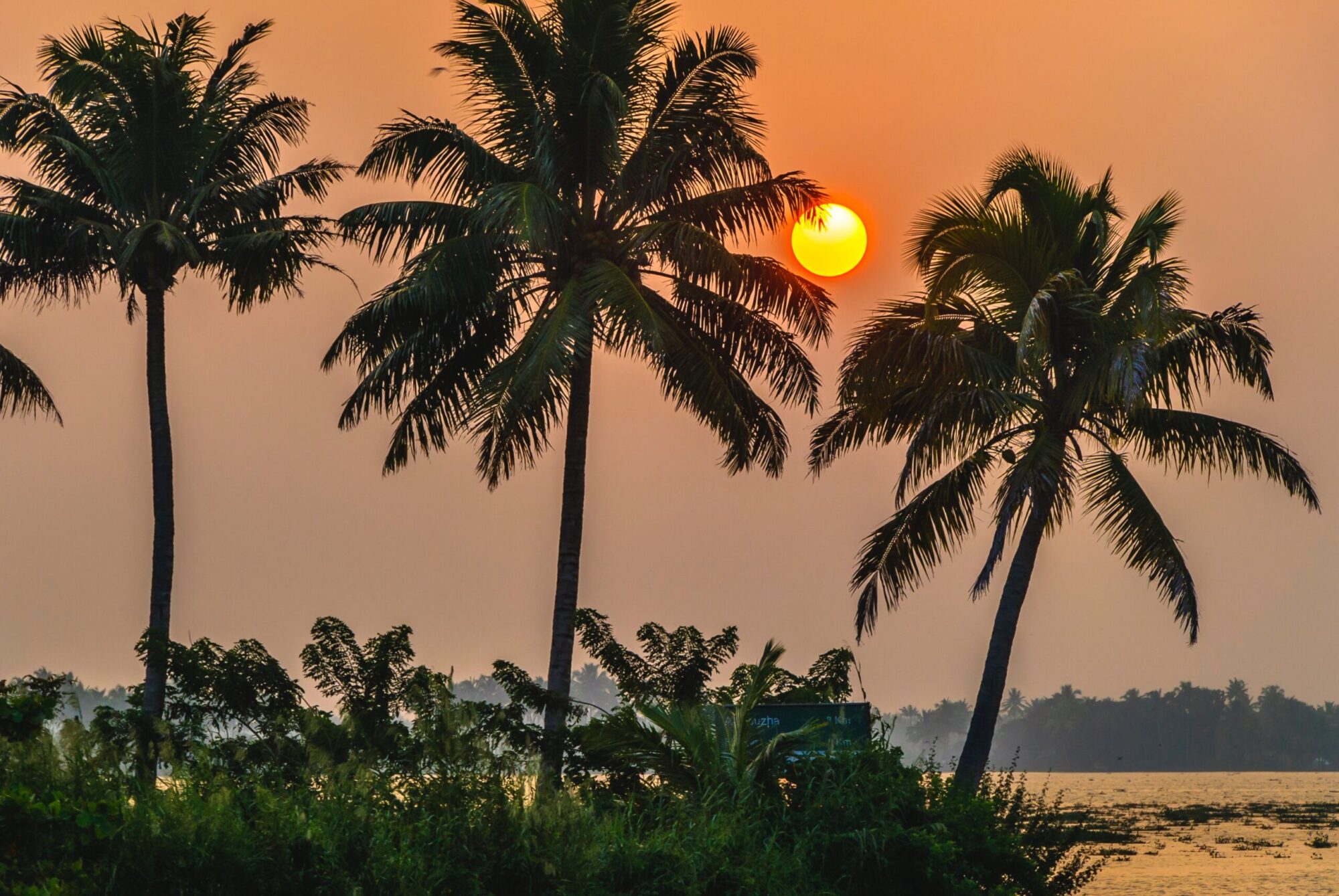For all the travelers out there looking for an authentic experience, we’ve picked out some of the best places to see in South India that need to be discovered in our offbeat travel guide. Personally, I think you only truly get to know a place by bumping into random spots and people, making it your own. Each time you return, it will be an entirely new experience! So, check out this South India Travel Guide to have a great traveling journey!
Looking for an authentic South India Travel Guide?
- Day 1-3: Goa
- Day 4-5: Gokarna
- Day 6-8: Hampi
- Day 9-10: Vattakanal
- Day 11-12: Coorg
- Day 13-14: Chikmagalur
- Day 15-16: Pondicherry
- Day 17-21: Kerala
Day 1-3: Goa
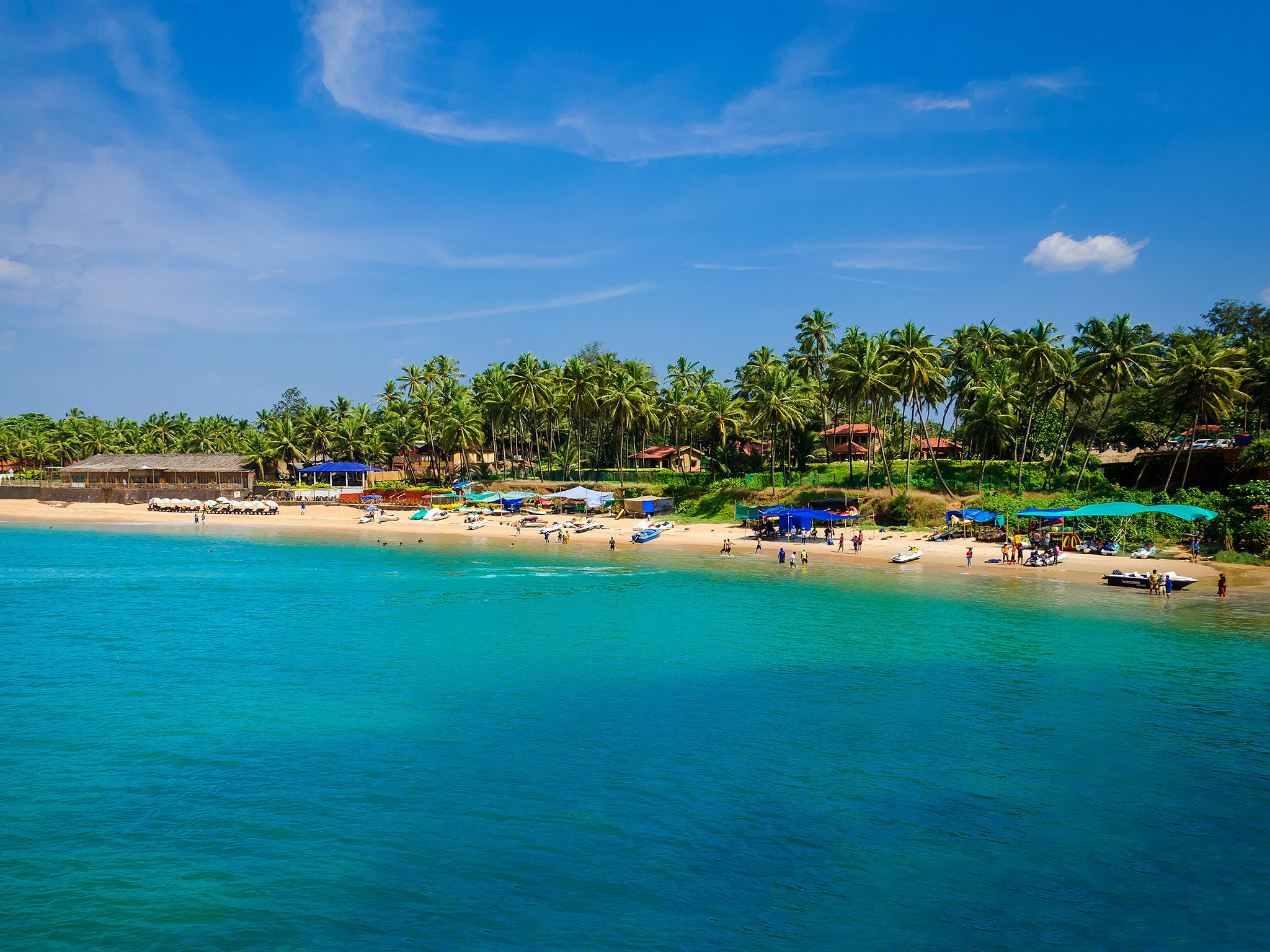
Goa is India’s beach destination, with coastlines stretching along the Arabian Sea. But it is also known for its vibrant parties, its blend of Portuguese and Indian culture, and its abundance of nature. North Goa sees a lot of tourist footfall and has most of the popular destinations. However, South Goa is just as nice with its serene beaches and old-world charm. So, Goa definitely has the best of both worlds. Therefore, we put this place into the list of must-visit places in this South India Travel Guide.
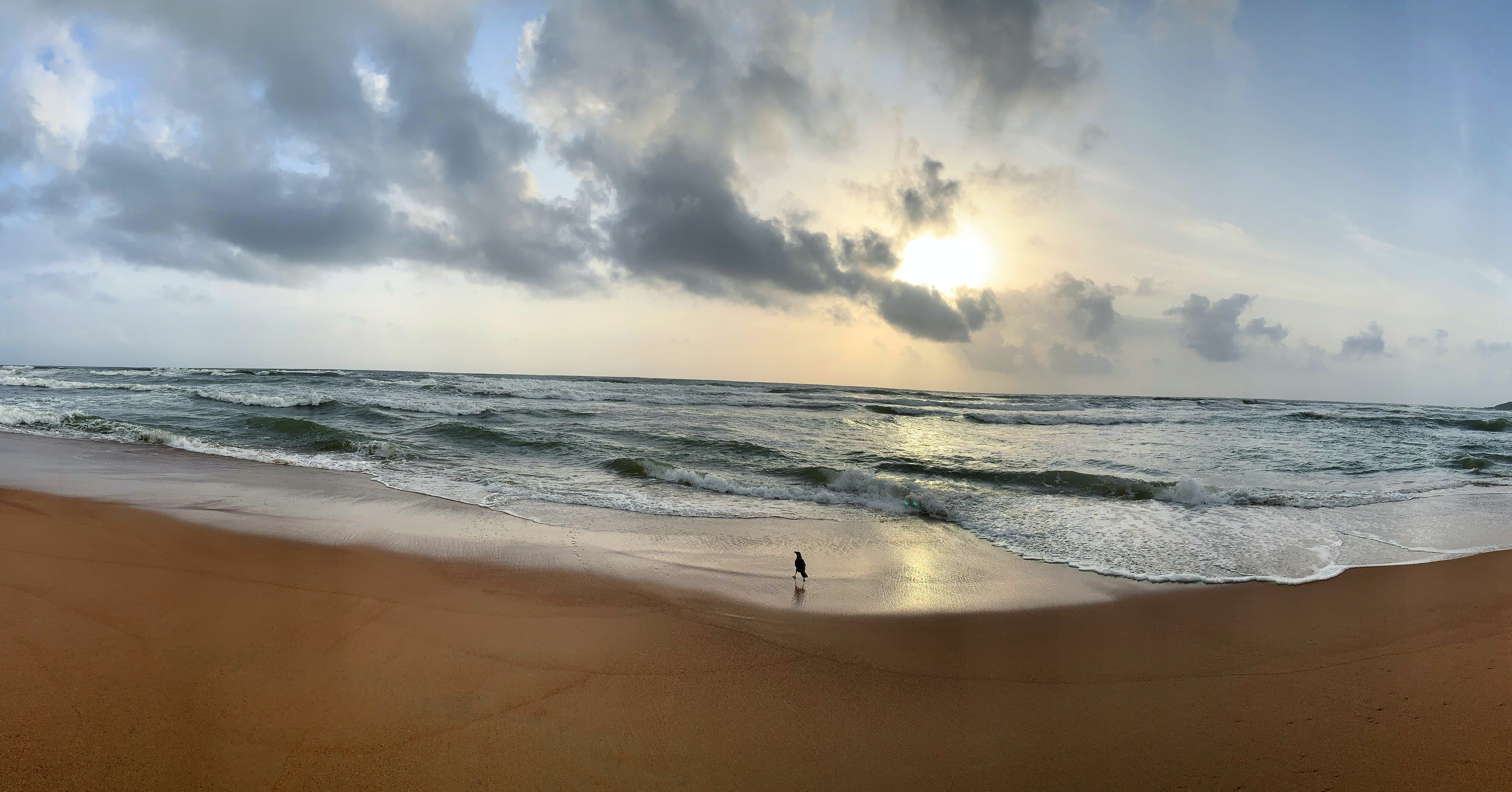
When in Goa you must spend some time by the sea. To the north, there are the more popular beaches like Baga, Anjuna, Vagator, and Candolim. For more low-key beaches, you can head South to Colva, Agonda, Palolem, and Varca. Moreover, there are lots of beaches tucked away, so keep looking out for what suits your mood.
Furthermore, beaches in Goa are known for legendary night parties and the quiet shacks lined up on the shore. Specifically, Baga, Calangute, and Anjuna are great spots for a variety of water sports. Plus, there are tons to choose from, including parasailing, banana boats, and lots more.
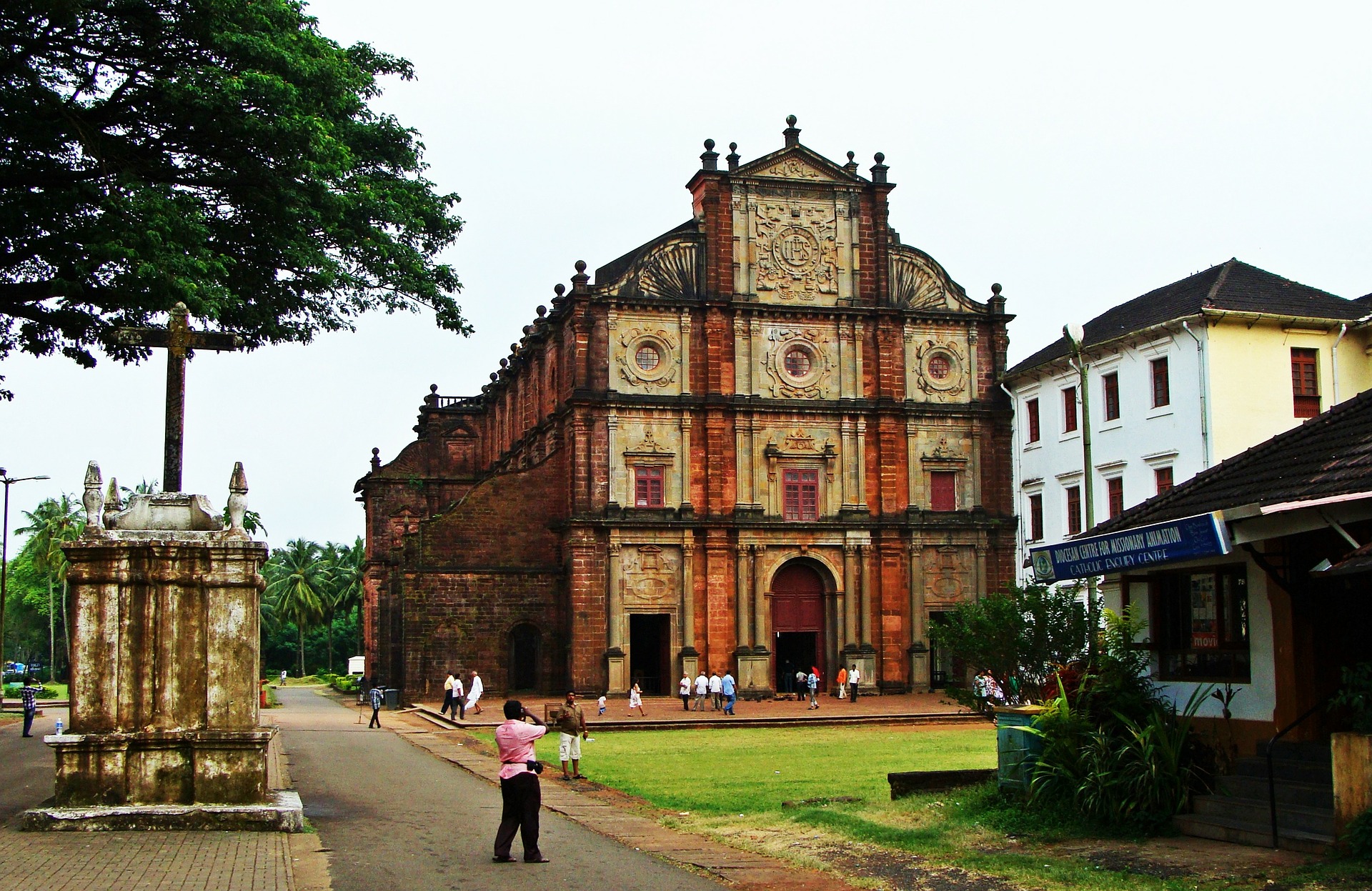
Prior to 1961, Goa was a Portuguese colony, and it still holds on to a lot of those roots. There are a number of colonial-era cathedrals and churches scattered across the state.
Places to Visit in Goa
Se Cathedral: This 16th-century monument built by the Portuguese is the largest church in Asia and is known for its gorgeously decorated interiors and imposing exteriors. Note: It is advised to dress appropriately when visiting places of worship.
Basilica of Bom Jesus: This is one of the most famous churches in all of India and is known for its Baroque architecture. Declared a UNESCO World Heritage site, the building of this church coincides with the beginning of Christianity in India.
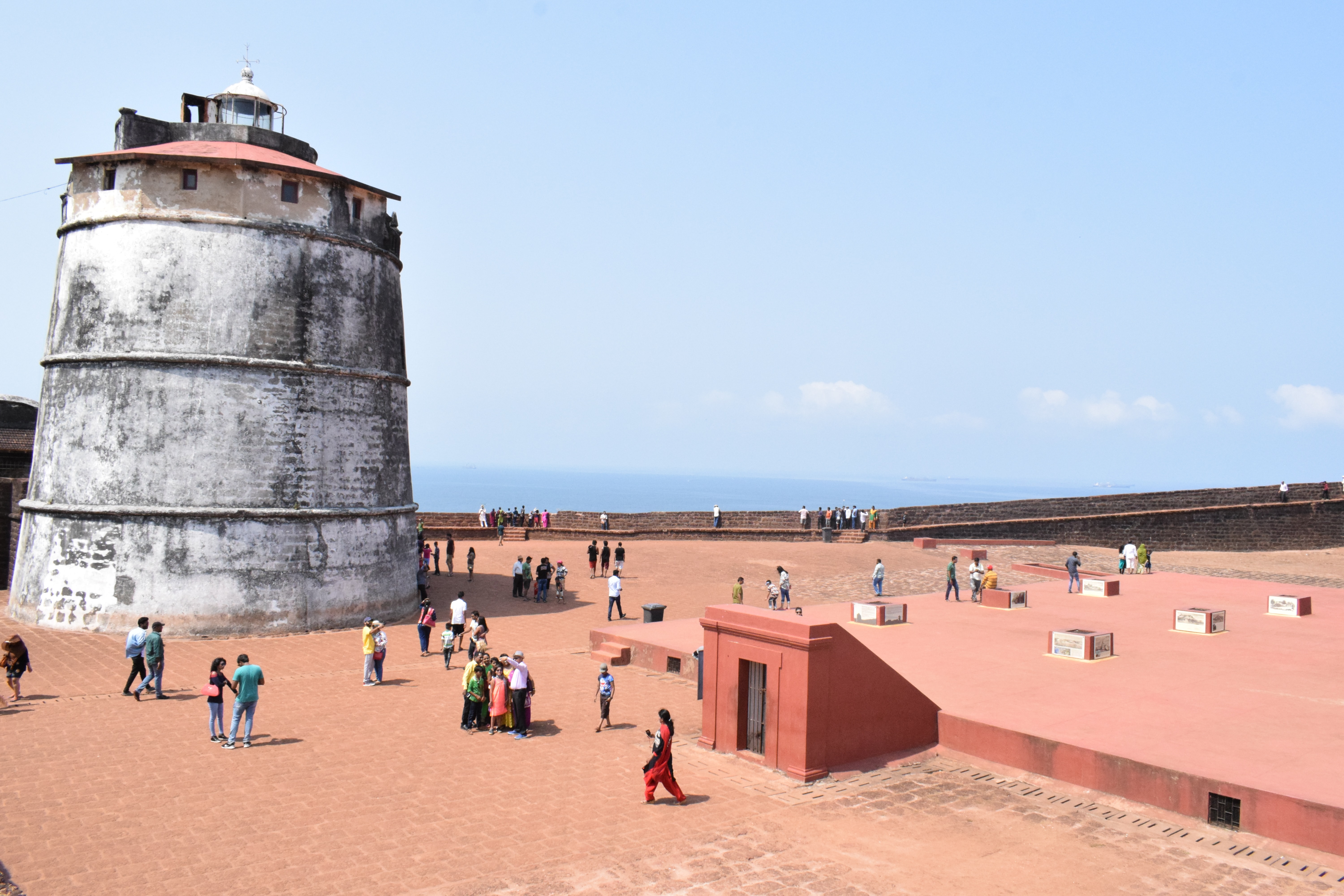
Fort Aguada: Located on Sinquerim beach and overlooking the Arabian sea, this 17th-century Portuguese fort is also a great place to catch an unforgettable sunset.
Chapora Fort: Located quite close to Vagator beach, this destination has been made popular by Indian movies and is known as the Dil Chahta Hai fort, named after the movie filmed there. This is another spot known for spectacular views and sunset vistas.
Goa is known for its flea markets, where people come from all over to sell jewelry, art, food, and all sorts of knick-knacks. So, make sure to drop by and pick up a souvenir. They’re usually up and running on Saturdays and Wednesdays at Anjuna.
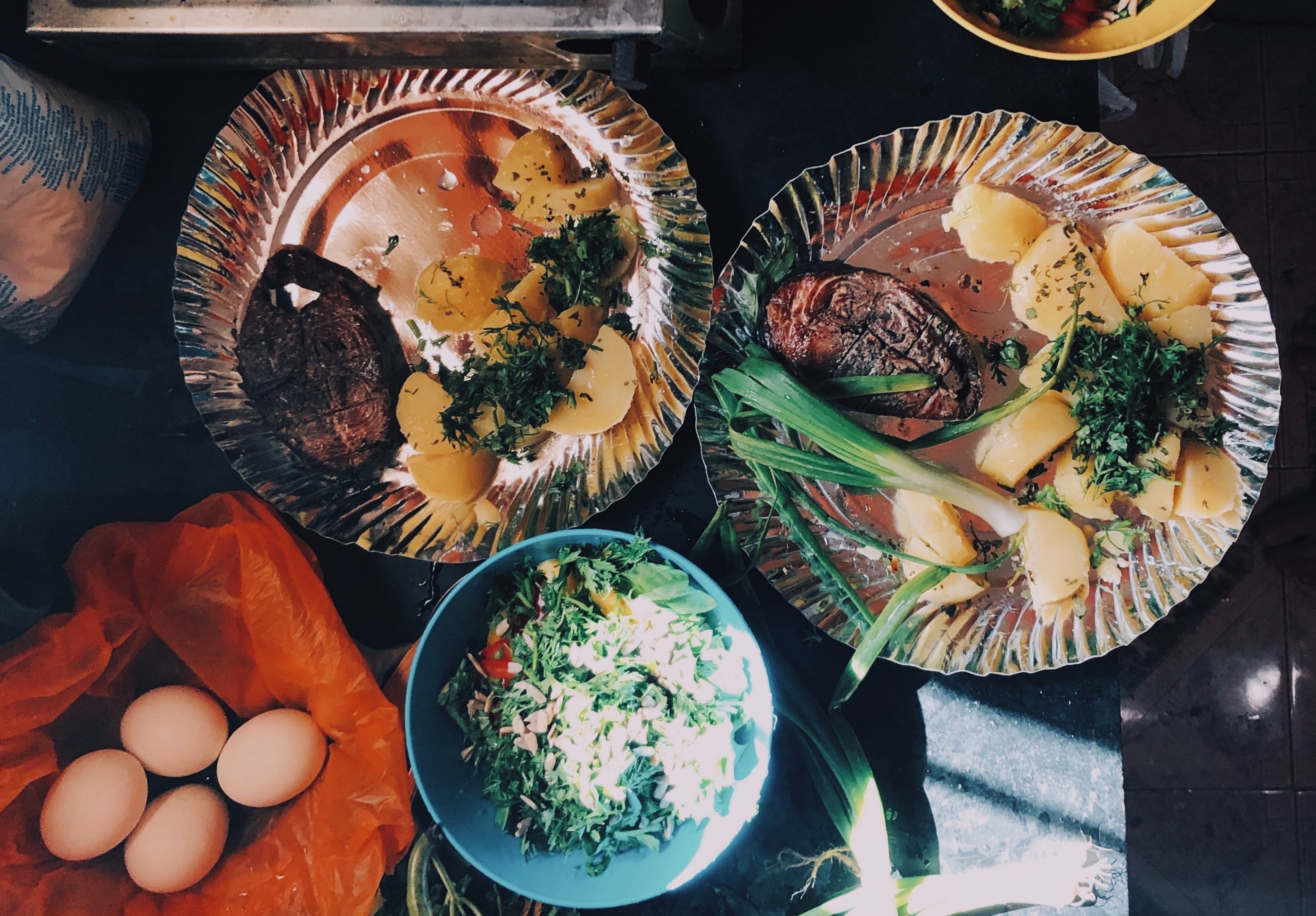
Goan food is a celebration of east meets west. Some Goan specialties you have to include on your menu are Bebinca (cake-like dessert), Ambot Tik (a spicy preparation of fish), Goan Feni (local alcohol), Vindaloo, Cafareal and Xacuti (different preparations of meat). Furthermore, there are several restaurants in and around Goa where you can feast on these delicacies. Thalassa for a night out and Fat Fish for some soulful local meals and beer.
Things to Do in Goa
Visit Dudhsagar falls and explore beaches in South Goa (spend hours sunbathing at Palolem and Arambol). Then, go bird watching at Chorao, gorge on fish at Fat Fish (near Baga), and have candlelight dinners at Thalassa (near Vagator beach).
Accommodation
Opt for places like Anjuna and Calangute in North Goa which lies in the center and makes it easy for you to go places. South Goa is known for boutique and beachside stays. So, browse through your options before settling on one.
Day 4-5: Gokarna
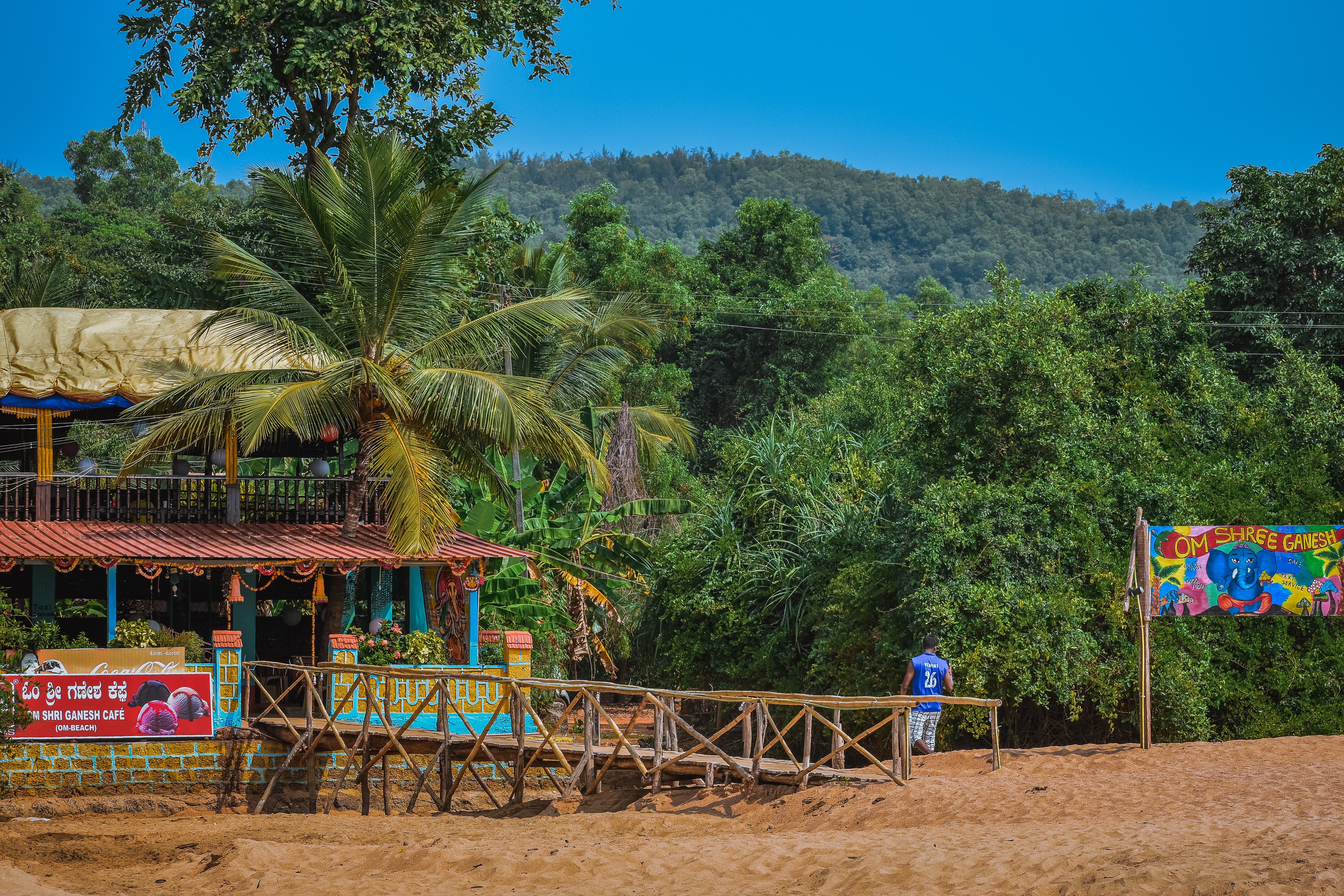
Gokarna is a small temple town located on the west coast, just 5 hours away from Goa. For a lot of Indian visitors, Gokarna is a pilgrimage town that is frequented during festivals like Shivaratri and Ganesh Chaturthi. In addition, the other set who visit this quaint destination are travelers looking for peaceful beach time. Therefore, if you are into beach destinations, Gokarna should make it to the list of must-see destinations in this South India Travel Guide.
Places to Visit in Gokarna
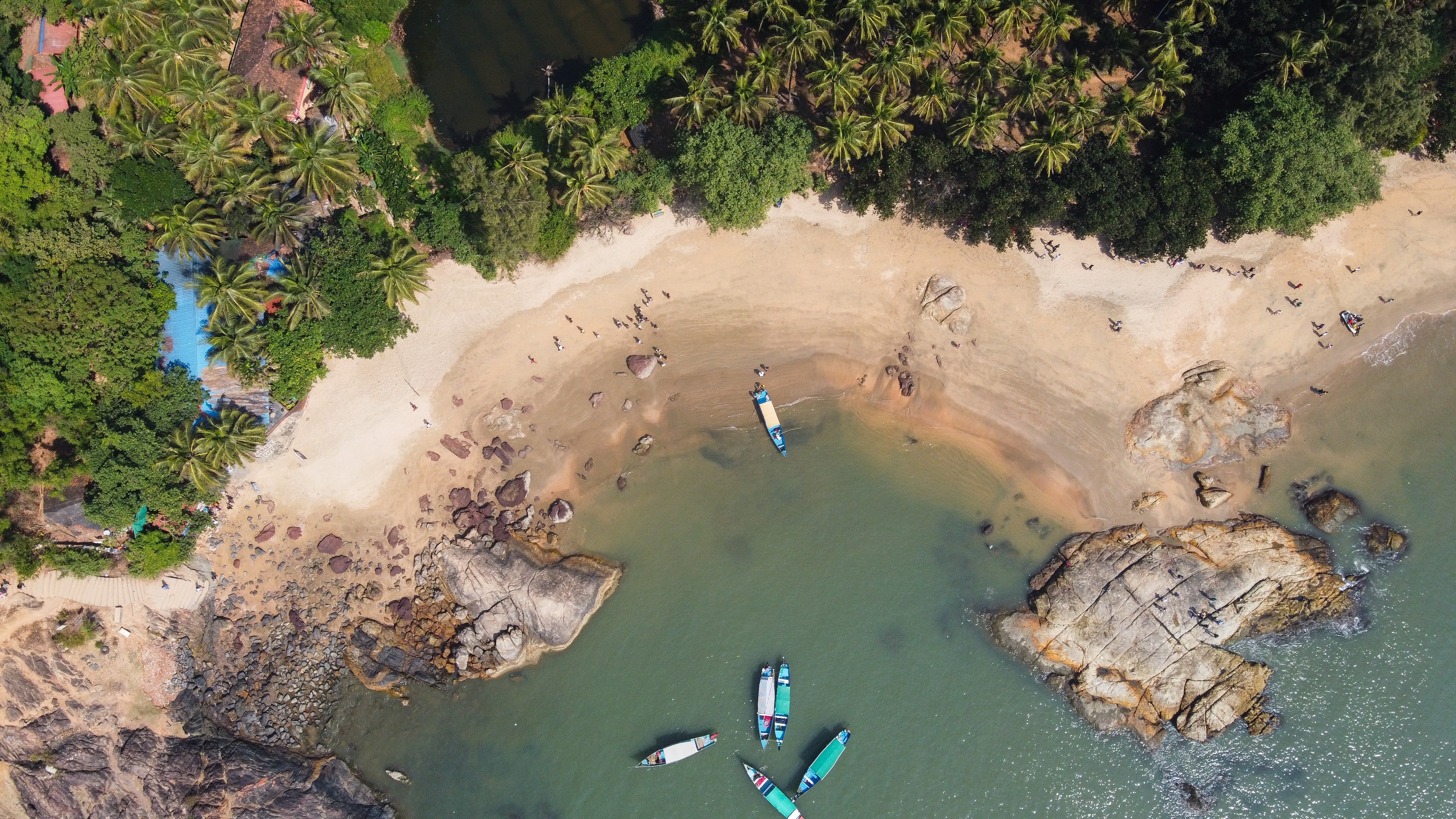
Gokarna has lots of beaches for you to explore. In fact, they are all lined up together, which makes all of it super accessible. So, you can start your trek from Kudle beach and make your way across Om beach, Half Moon beach. In the end, stop by Paradise Beach. Moreover, if you are lucky, you will have the beach all to yourself with only the rare coconut seller and waves for company.
Gokarna is famous for its temples which date back to the 14th century. Specifically, the most famous one is the Mahabaleshwar Temple, home to the famous Shiv Linga. Moreover, you should also try to visit the other main temples like Ganapati temple and Koti Teertha. Alternatively, take a leisurely stroll through the lanes of the main town and look out for wooden tile roofs and pillars (Henchina Mane). Or you can also pick up some souvenirs from the local market.
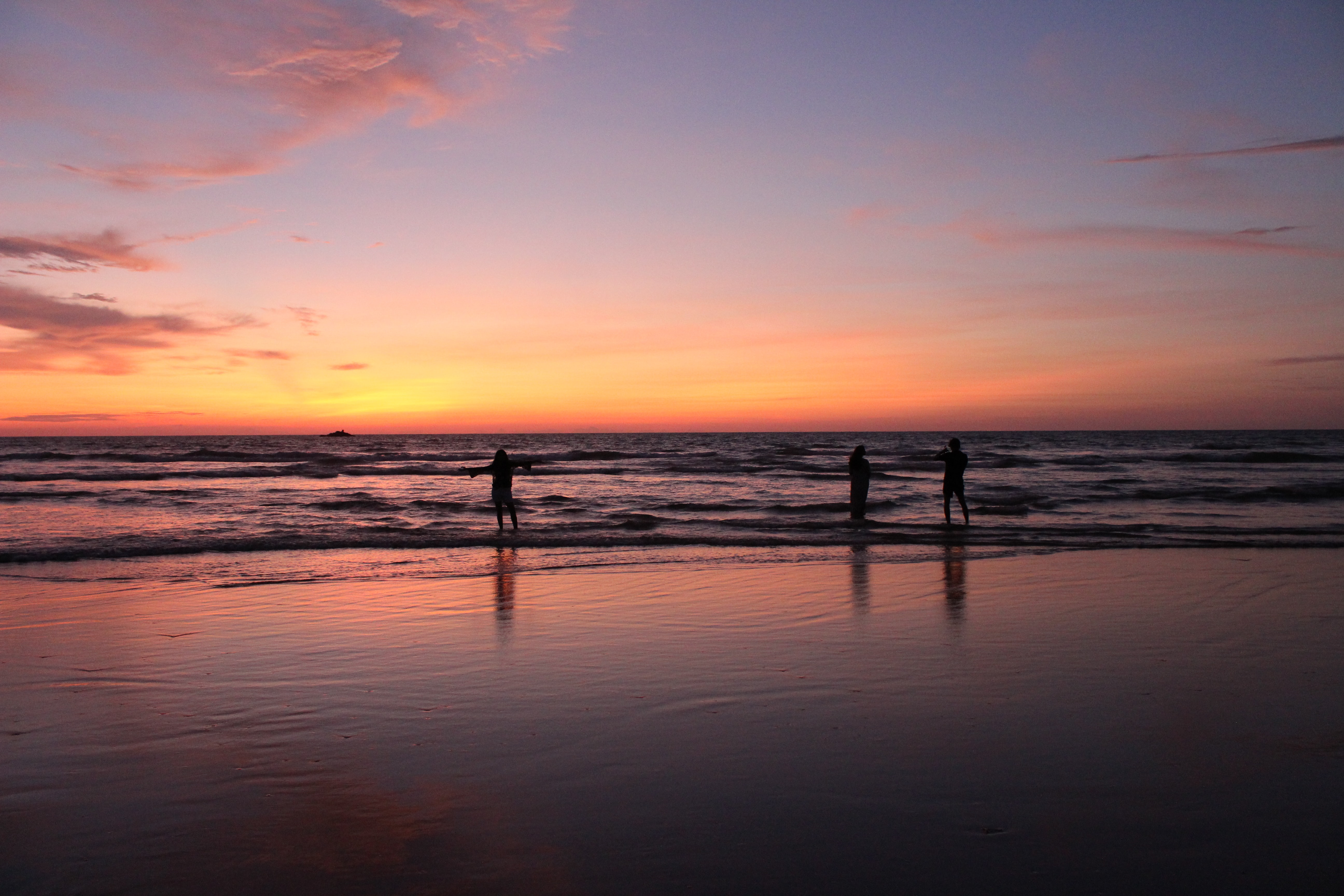
Some great shacks on Kudle beach offer a variety of cuisines and fresh seafood. Therefore, it’s a great rest spot to grab a beer and munch on some yummy food after your beach trek. Then, trek to paradise beach, spoil yourself with seafood and some hearty vegetarian meals, long walks at Om beach in the morning, and night beach parties with the locals.
Accommodation
There are some really good hostels near Kudle beach and shacks by the beach, too, for those who want to stay by the beach.
Day 6-8: Hampi
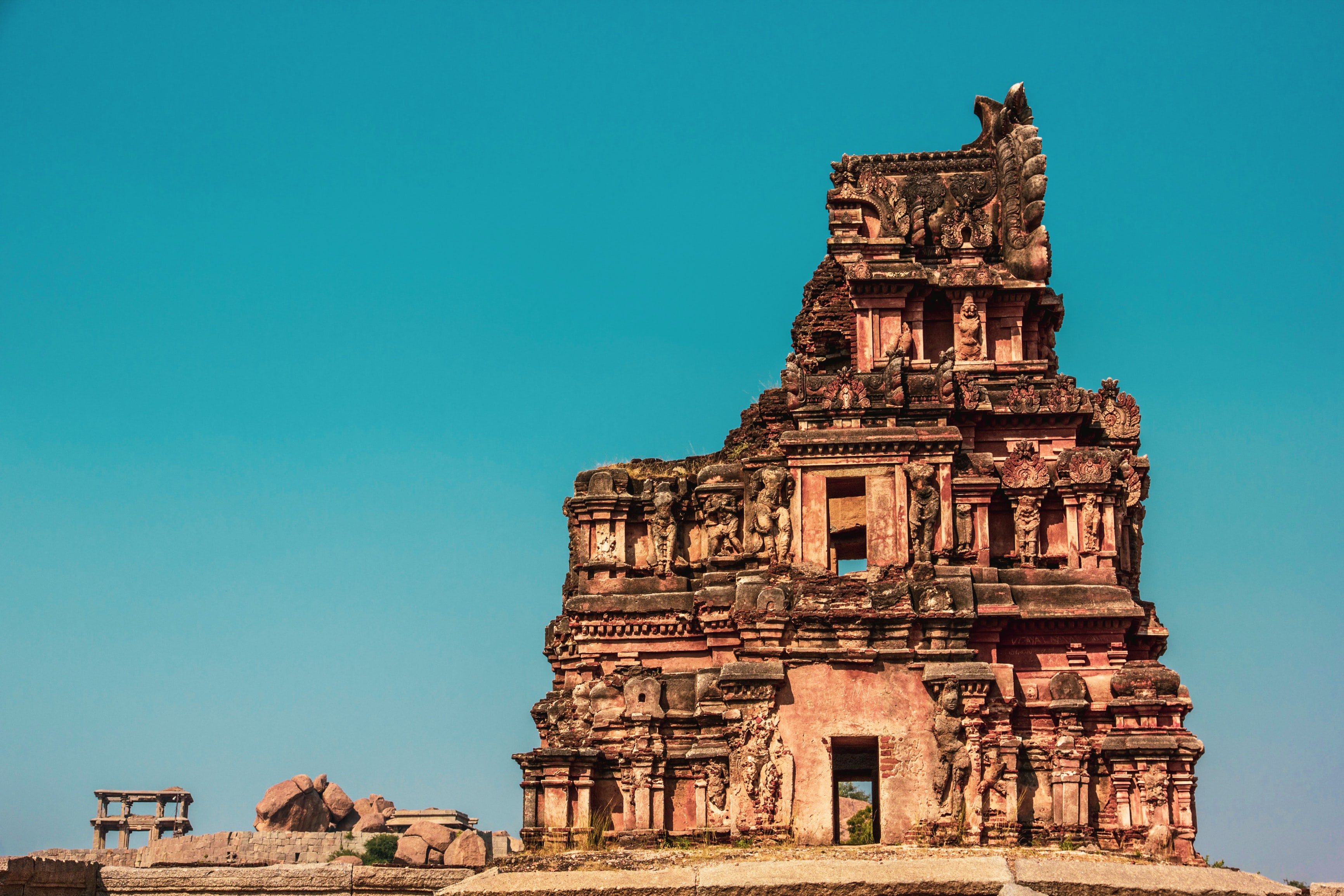
Hampi is an ancient village and the capital of the last great Hindu Kingdom of Vijayanagar. Moreover, it has also been declared a UNESCO World Heritage Site and attracts travelers from all over the world because of its rich history. Hampi’s rugged terrain has temple ruins strewn across, and each one has its own story to tell. Therefore, we recommend you take a guided cycle tour around Hampi to visit them all.
Places to Visit in Hampi
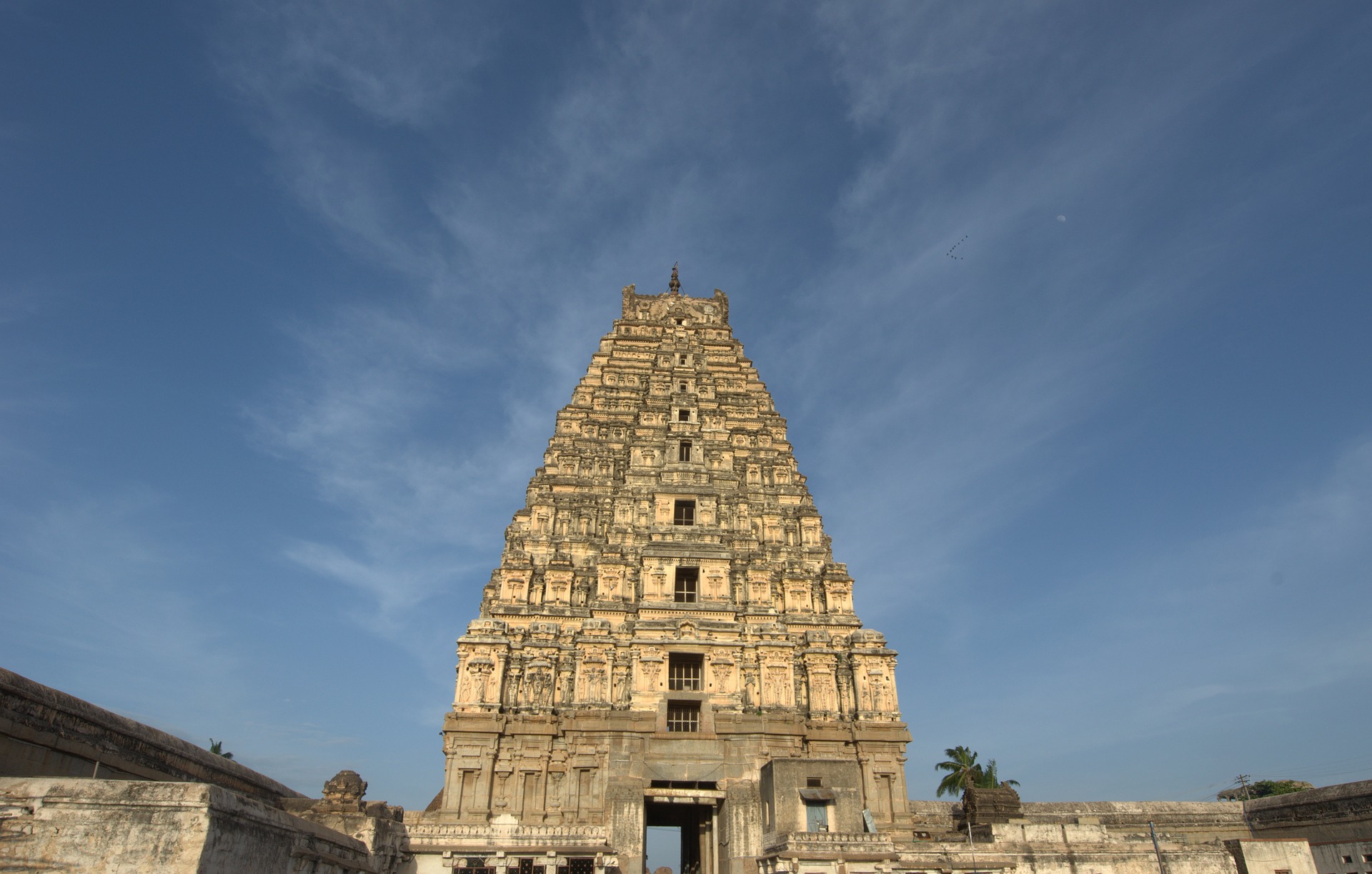
Learn the history of Hampi by visiting the monuments and temples. The main ones are the Virupaksha temple, Elephant Stables, Lotus Mahal, and Anjaneya temple. Each one will give you more of an insight into Hampi’s history and is a great opportunity to marvel at the architectural prowess of our ancestors.
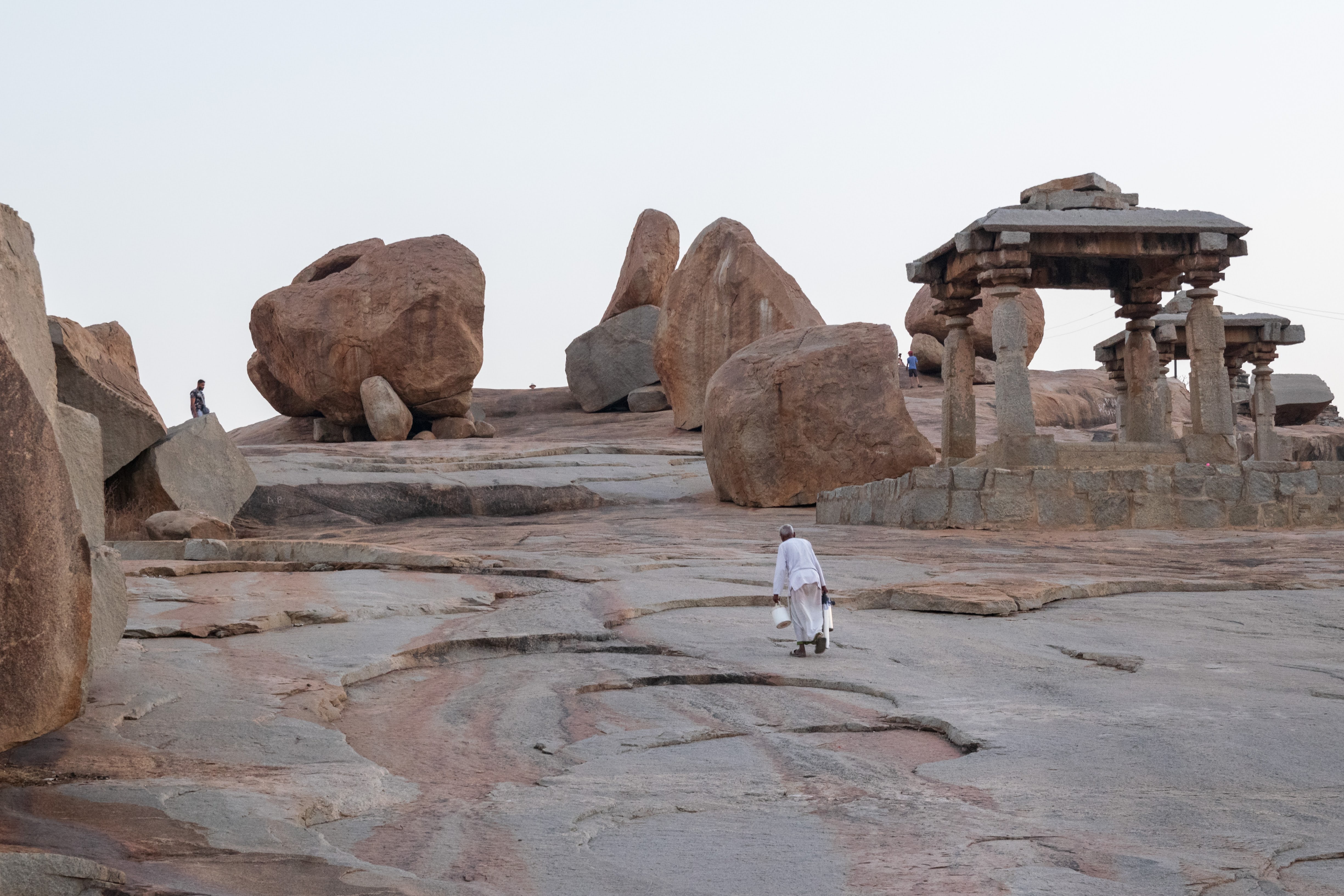
Hills are scattered around Hampi. Some popular trekking destinations are Anjaneya Hill, Matunga Hill, Malyavanta Hill, and Hemakuta Hill. Matunga is at the center of Hampi and is also the highest point. It is a great place to get an aerial view of the ruins of Hampi. Hemakuta Hill is known as one of the best spots to watch the sunset or even the sunrise.
Swimming in the waters of the Hampi dam is a fun way to escape the heat. The more adventurous can even try out cliff diving. There are signs all around warning tourists of crocodiles so ask the locals before diving in. You can also go for a coracle ride. These cute, round boats are a pleasant way to navigate the waters.
Things to Do in Hampi
Anjaneya, Virupaksha, Achyutaraya temples, cliff diving in the Tungabhadra (please ask the locals for tips), and chill at “Sunset Hill.”
Accommodation
Hospet is the best place to stay, so you can spend more time exploring most of Hampi, but for a more chilled-out experience, there are lots of places across the Tungabhadra river, also known as Hippie Island.
Day 9-10: Vattakanal
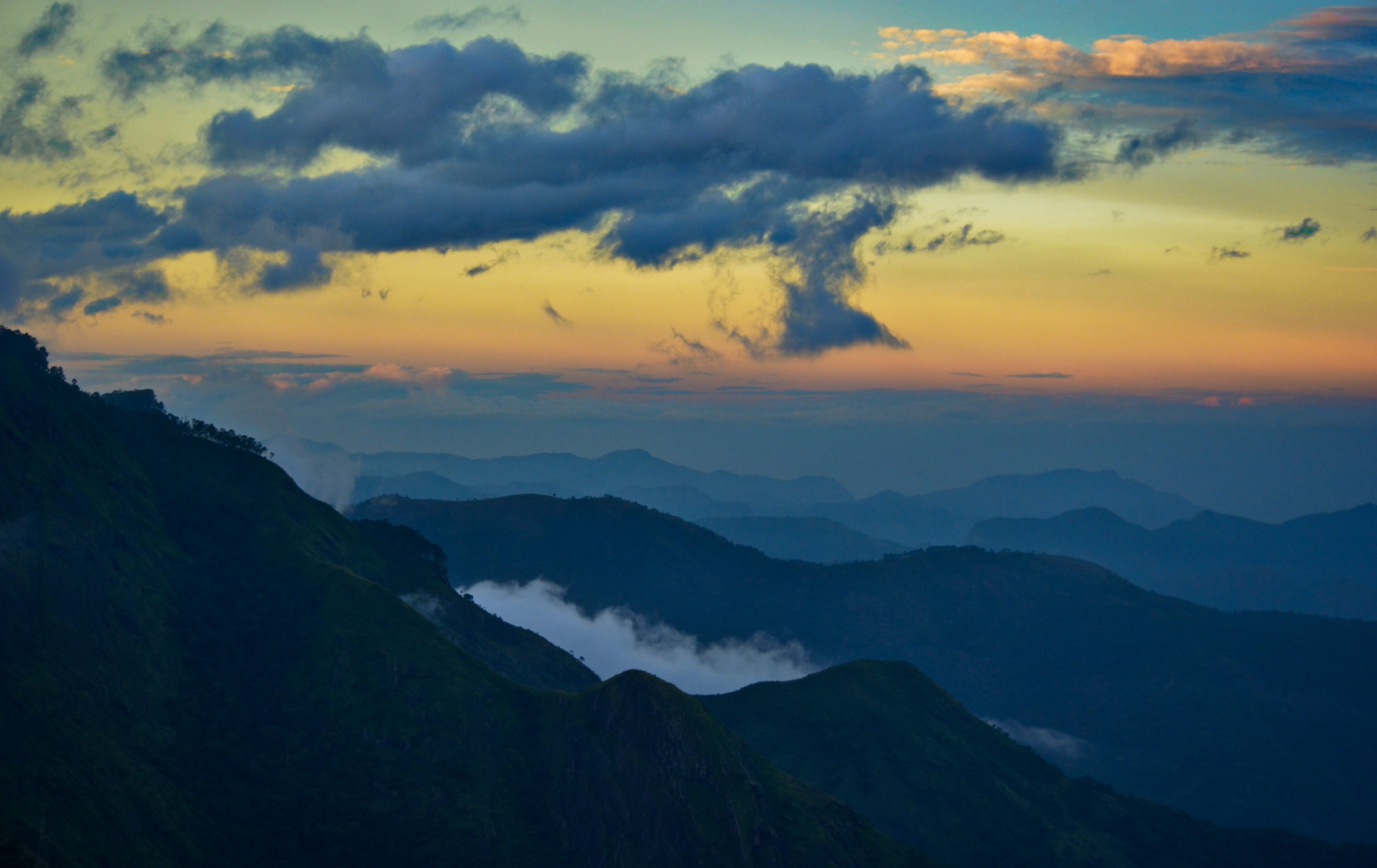
Vattakanal is a beautiful hill station located in Tamil Nadu. This hidden treasure lies far from the madding tourist crowds of Kodaikanal. There are a few popular treks and places to visit, but if you really want to experience Vattakanal, then you can skip all of that and trek to canopy hills.
The trek is of moderate difficulty, and the starting point is near the town of Theni. It is a two-day trek that will take you through the forest and ends at Dolphin’s Nose in Vattakanal. Dolphin’s a single narrow rock shaped like a dolphin’s nose, which juts out from the edge of the cliff, overlooking the valley below (A perfect photo op!).
In this South India Travel Guide, we recommend you also make a short trip to Kodaikanal, an hour’s ride away. This is the more popular hill station frequented by travelers to escape the summer heat. You can rent a taxi to get here. Visit the Kodaikanal lake for a fun boat ride across the lake, or go for a long stroll at Coker’s Walk, which captures the magnificent beauty of the hills.
Things to do in Vattakanal
Sneak into Kodaikanal for some great food (Faves: Cloud Street & The Pastry Corner), and trek to canopy hills.
Accommodation
There are a lot of homestays, hostels, and a few resorts in the vicinity.
Day 11-12: Coorg
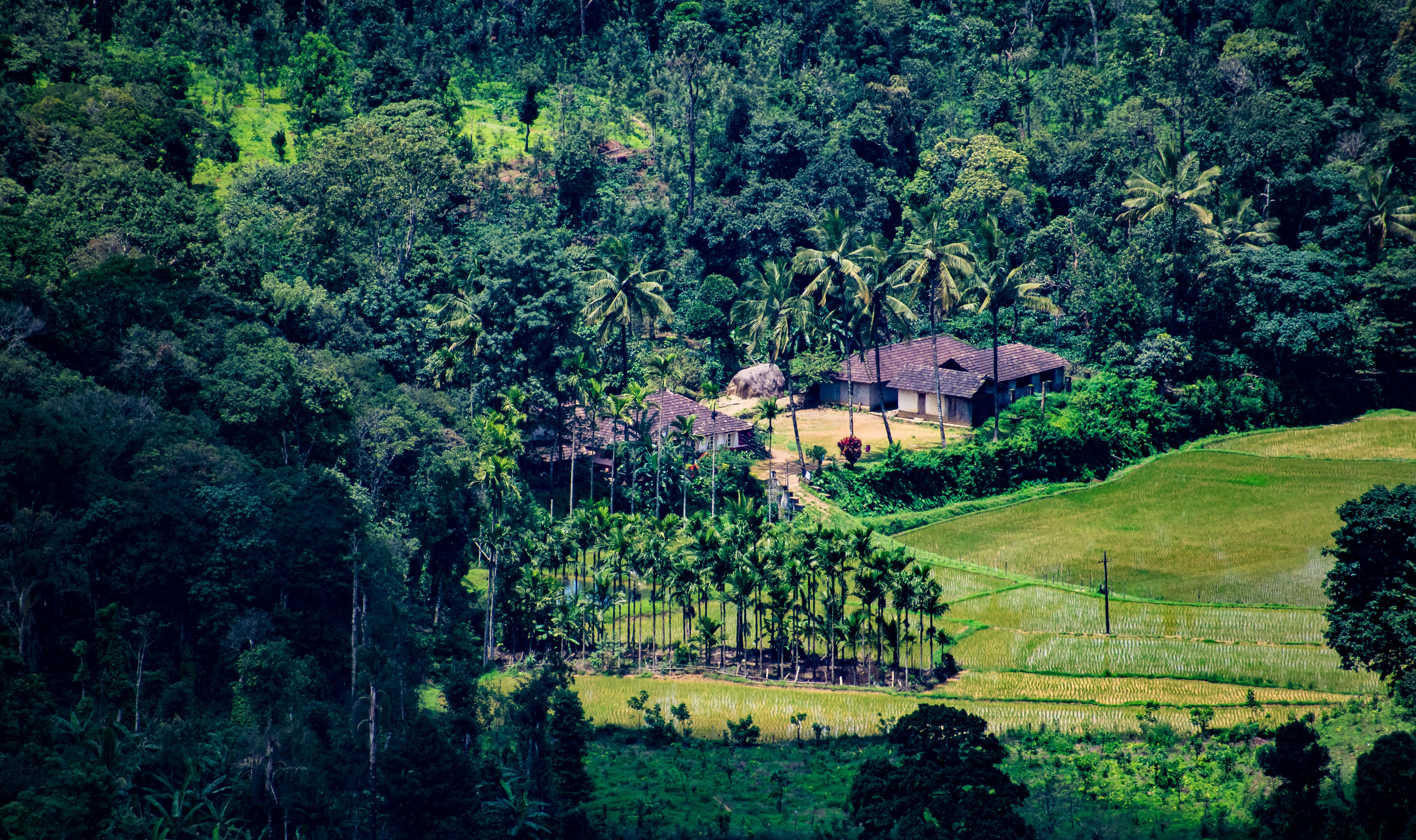
Coorg is another hill station nestled among the hills of Karnataka. Wherever you turn, you can see spice and coffee plantations. Dubbed the Scotland of India, it is a great retreat for those who love the mountains.
Places to Visit in Coorg
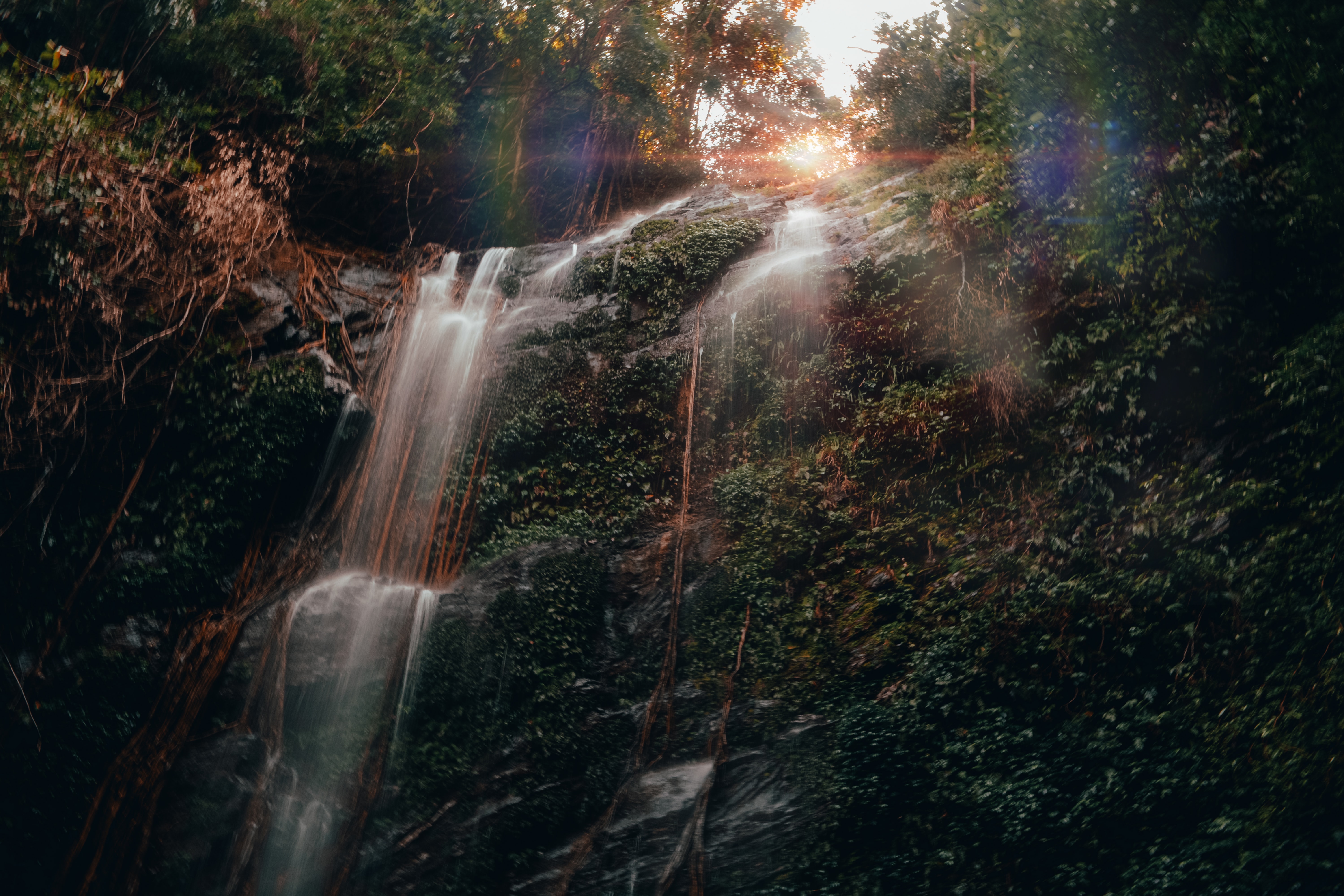
There are a number of trekking trails in Coorg. One of the best is the Brahmagiri Peak Trek, which will take you through the woods and winding hills. Remember to keep an eye out for wildlife. Other trekking trails are Tadiandamol, Kodachadri, and Kumara Parvatha. Most of the treks are of moderate difficulty, and it is best if you take a guide along with you on these treks. Keep in mind that June to August is the monsoon season and not the safest time to venture out for a trek. This is absolutely something that you must take personal note of from this South India Travel Guide.
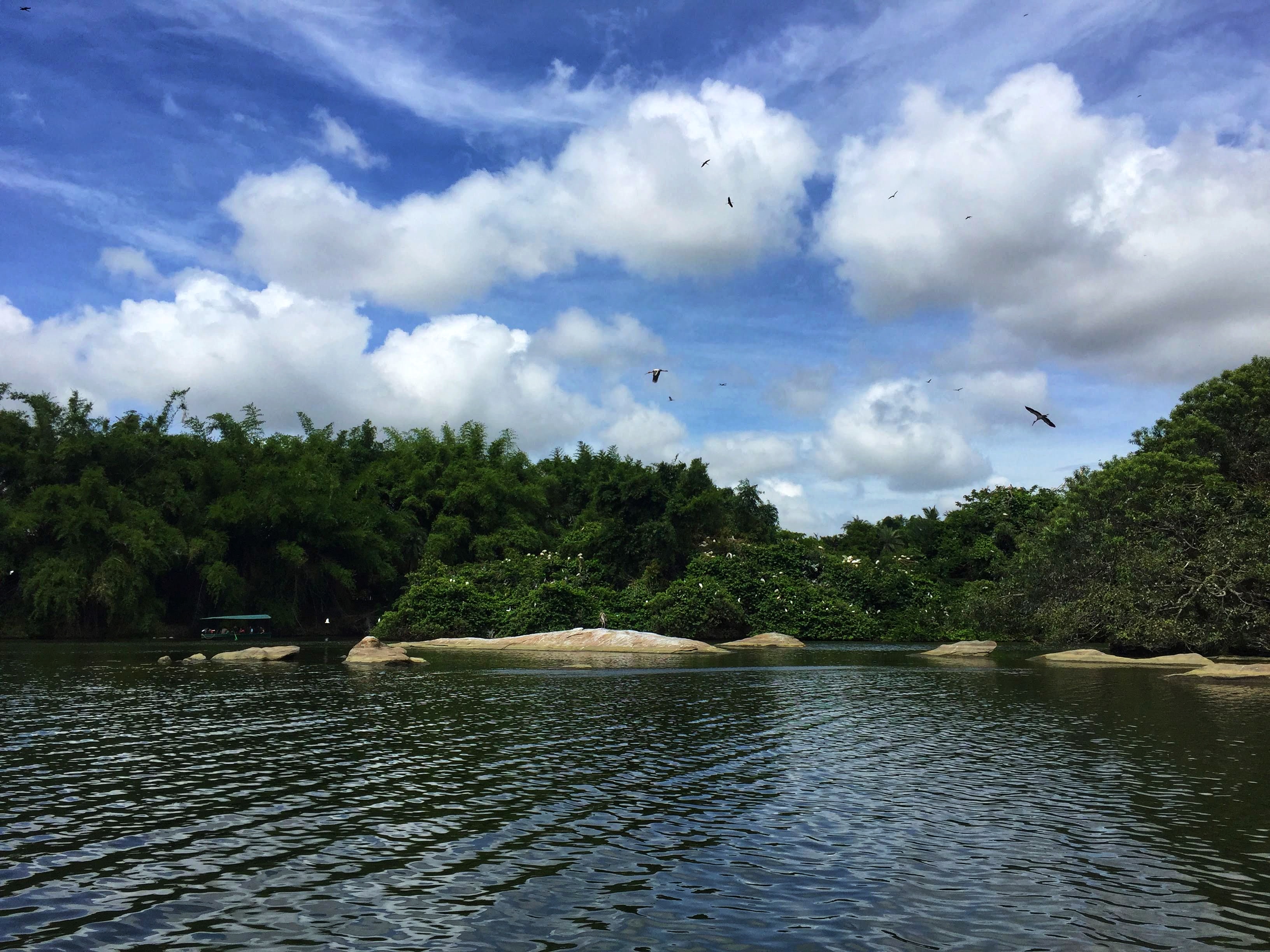
Coorg is also a much-sought water sports destination. Adrenaline junkies can head out for a fun day of river rafting in the Cauvery river. The rafting grades range from 1-5, and the monsoon is the best time for this activity. It is also a great time for fishing and angling in the river. Waterfall rappelling is another activity for extreme adventure enthusiasts, and the Chelavara Waterfalls is a popular spot for this.
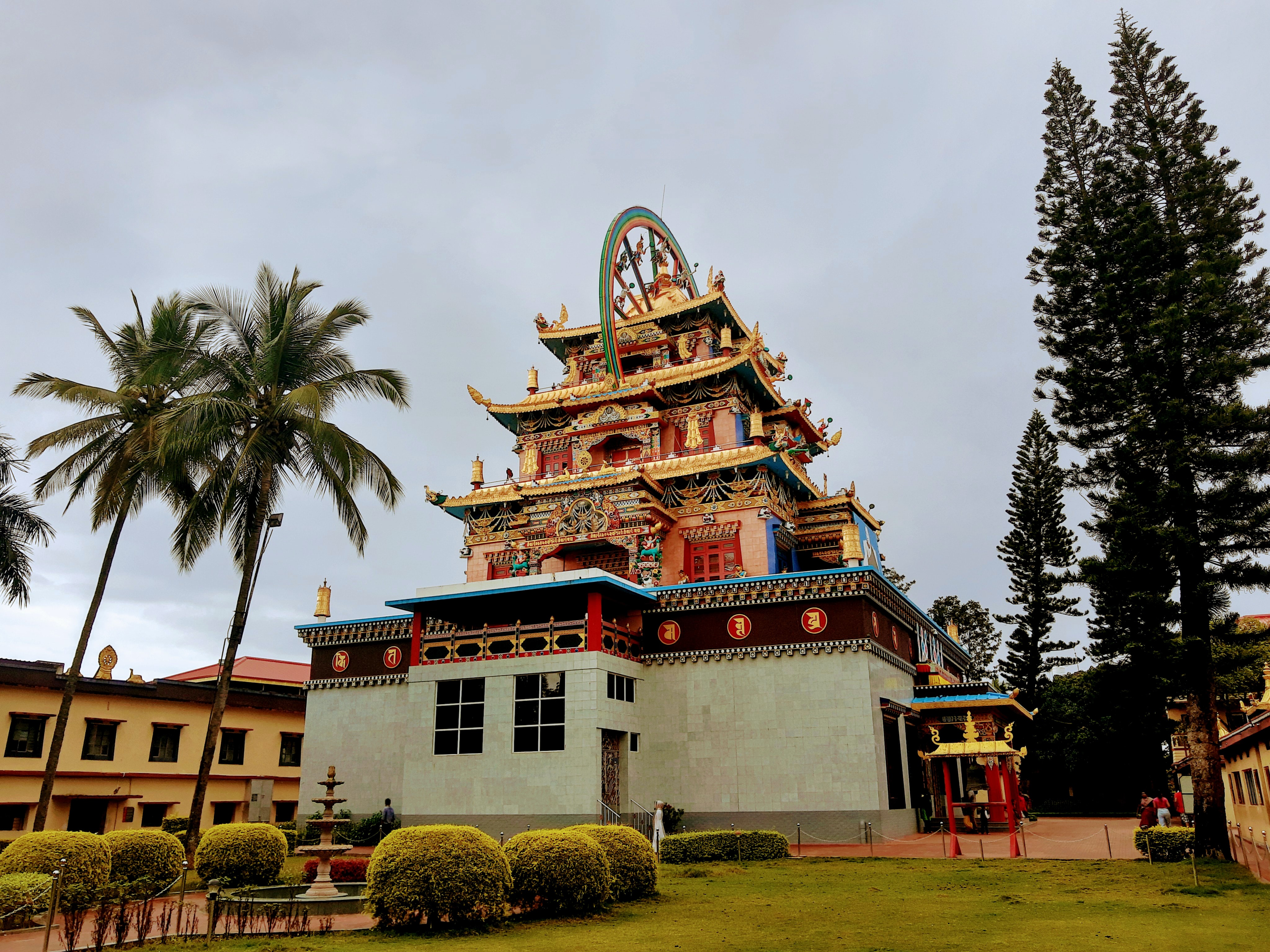
Bylakuppe in Coorg is India’s second-largest Tibetan settlement. The biggest monastery here is Namdroling, also known as the Golden Temple. Spend some time here to soak in the peaceful atmosphere and indulge in some yummy momos and thukpa. While in Coorg, you can also venture out to the Nagarhole National Park, home to Wild Elephants, Tigers, and Bisons.
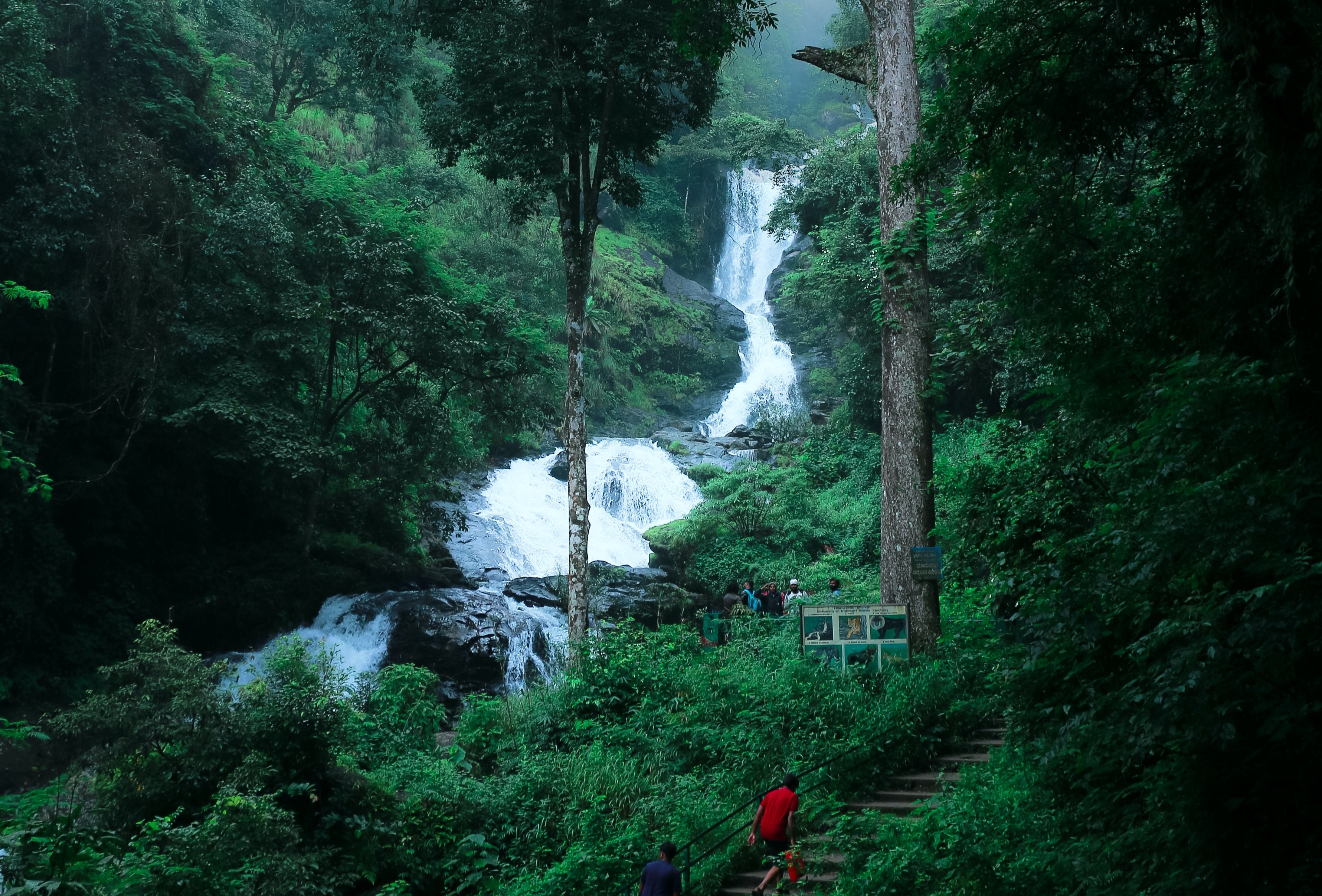
Abbey falls, and Iruppu falls are great watering holes for travelers. You can laze around and take a dip in the cool waters after trekking up to these spots.
Things to Do in Coorg
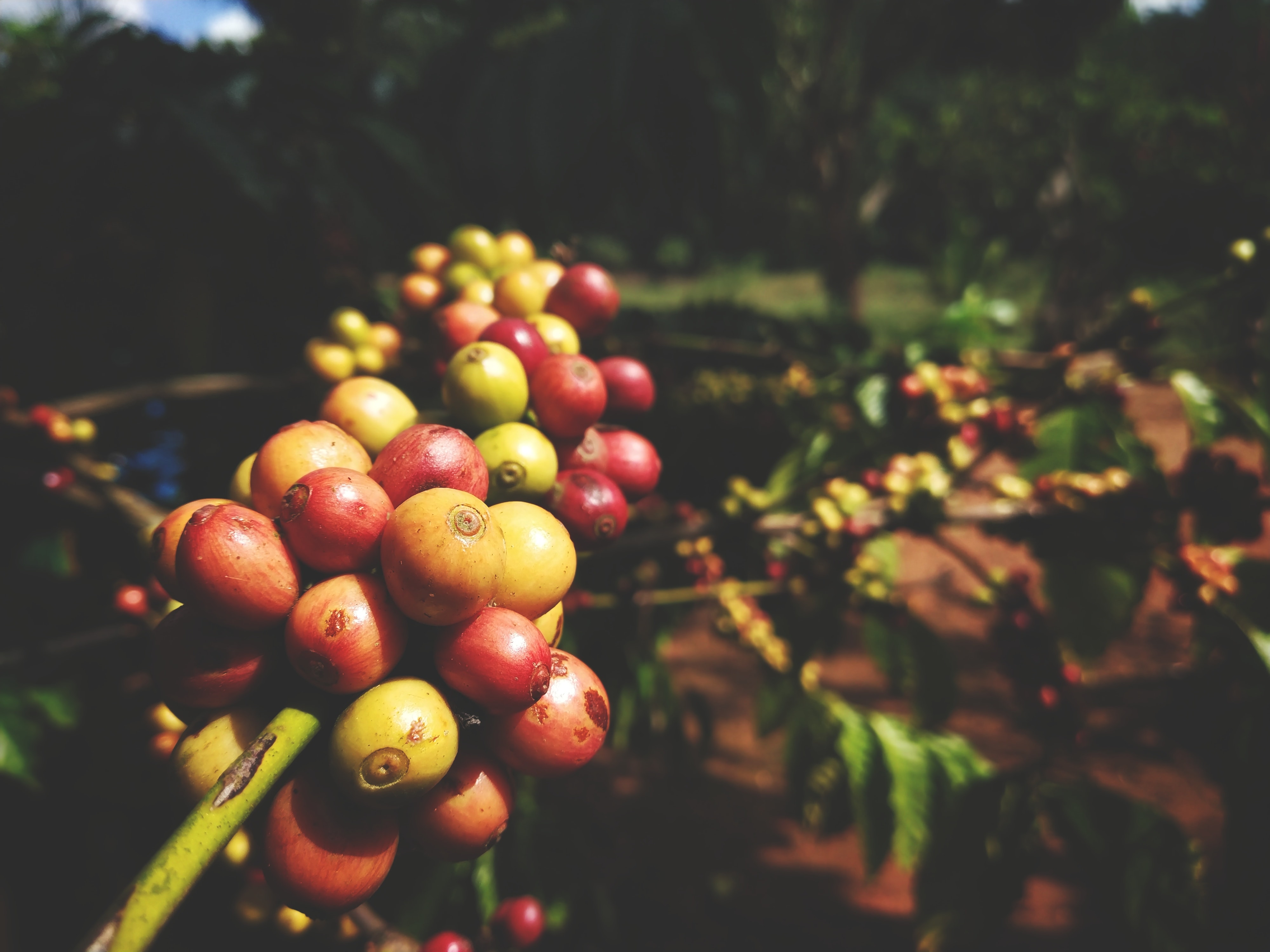
If you are looking for a coffee tour in this South India Travel Guide, go for a tour of the many coffee plantations in and around Coorg. You will find yourself surrounded by the aroma of coffee, pepper, and cardamom and learn about the process of planting, plucking, and then drying, roasting, and grinding the coffee. This almost always ends with a fresh cup of coffee! Besides, you can also participate in wild water rafting & kayaking, indulge in Coorgi cuisine (pandi curry is a must!), visit the Namdroling Monastery, and trek to Abby falls.
Accommodation
There are a lot of homestays and resorts in Coorg, but if you want easy access to most of the places in this travel guide, then Madikeri would be the best option.
Day 13-14: Chikmagalur
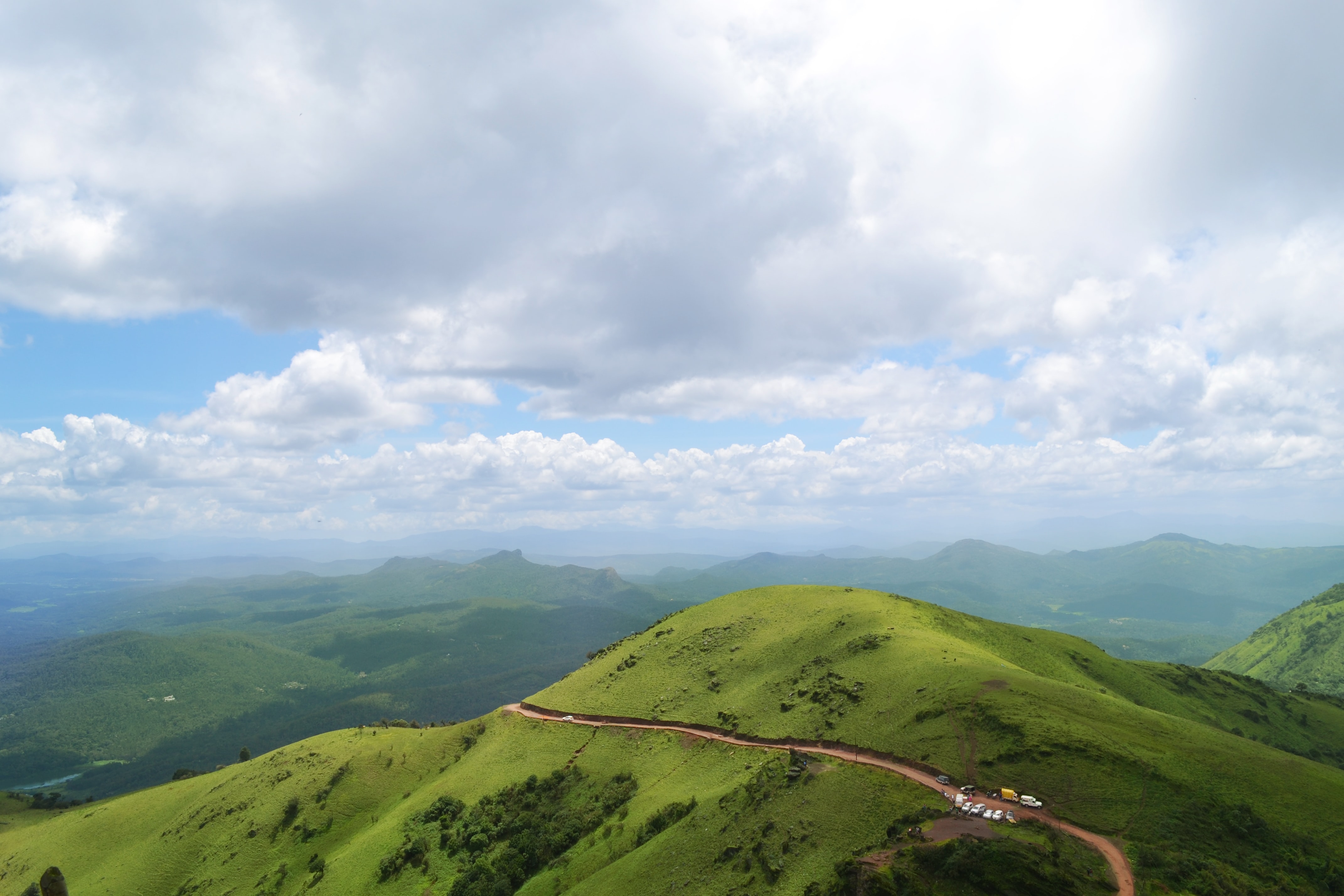
At the foothills of the Mulyanagiri hills lies Chikmagalur, an ideal vacation spot for those who love being surrounded by nature and…. coffee!
Places to Visit in Chikmagalur
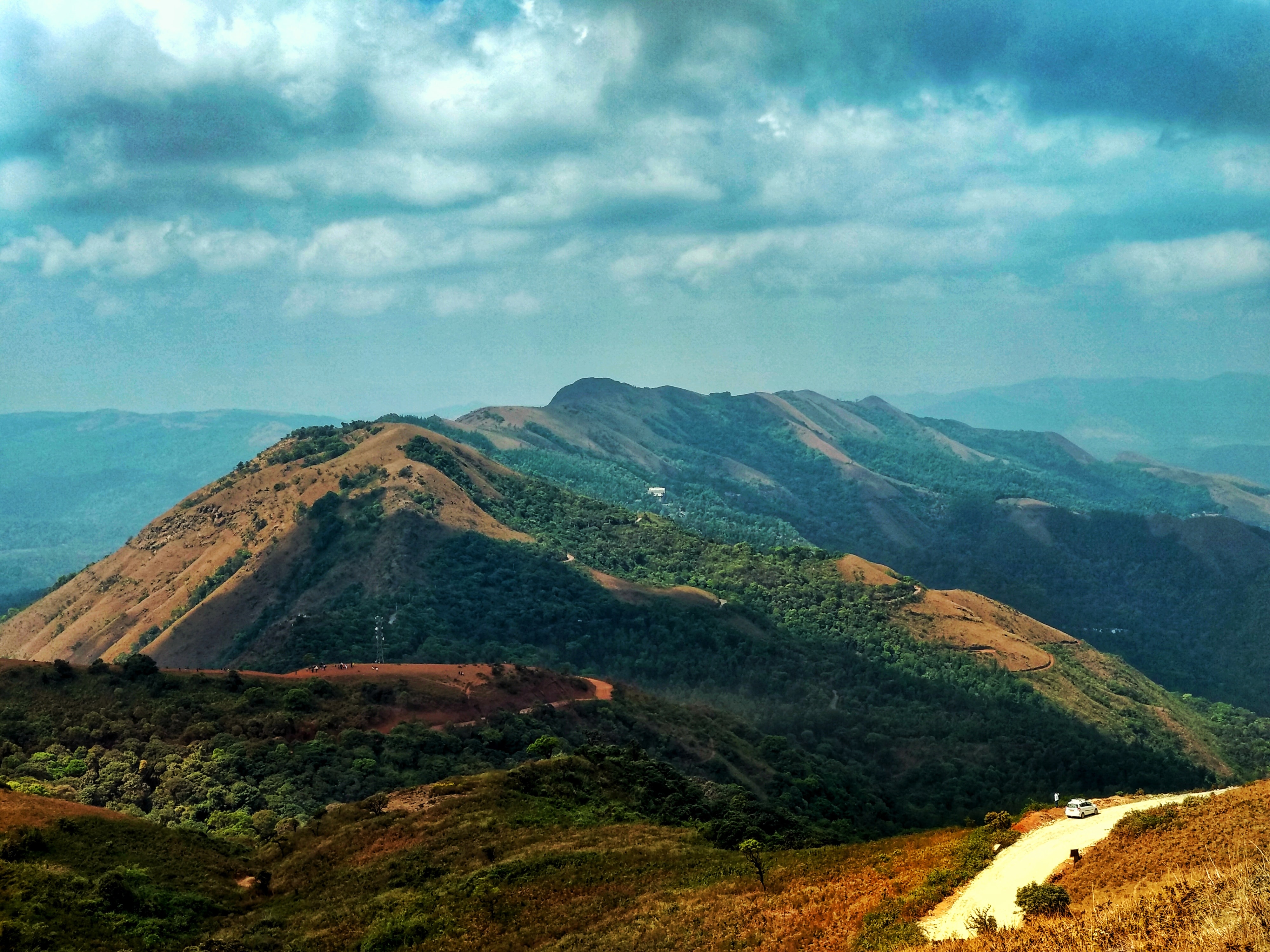
The Mullyanagari trek is your chance to climb the highest peak in Karnataka and the best place to see the sunrise. It’s a hard trek but imagine seeing clouds and a view like no other.
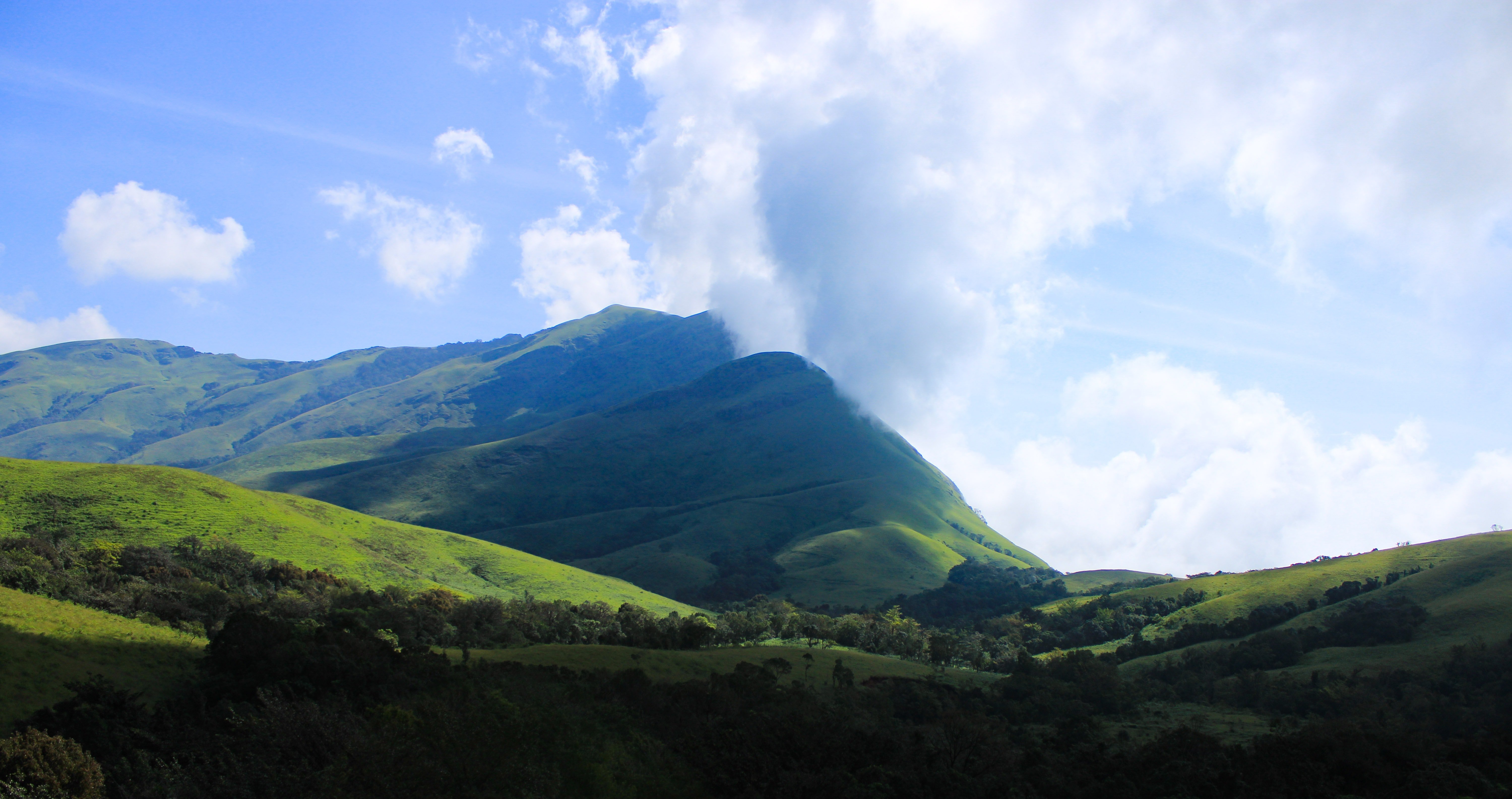
Another must-do is a visit to the Kudremukh National Park, the second-largest in Karnataka. Wildlife enthusiasts can revel in the rich diversity of flora and fauna it offers.
Wherever you turn, there will be coffee plantations, which makes Chikmagalur a great place for coffee lovers. Walk through the plantations and see the whole process in person, and if you visit during November – January, you can also take part in coffee picking. There’s also the Coffee Yatra Museum, where you can learn all about the history of the much-loved bean. Can’t get enough coffee? Check out our blog post on the 10 best cities in the world to visit for coffee lovers!
Like Coorg, Chikmagalur is also known for river rafting. The Bhadra river is the most sought-after spot for this activity and is the perfect pastime for the adventure seeker.
Things to Do in Chikmagalur
Visit Bhadra Wildlife Sanctuary, Sunset at Hirekolale lake, Ride to Hebbe Falls, and Mullyanagiri Trek.
Accommodation
There are a lot of resorts and cottages in Coorg, and since most places are a short drive away, you can pick them up according to your budget and other preferences.
Day 15-16: Pondicherry
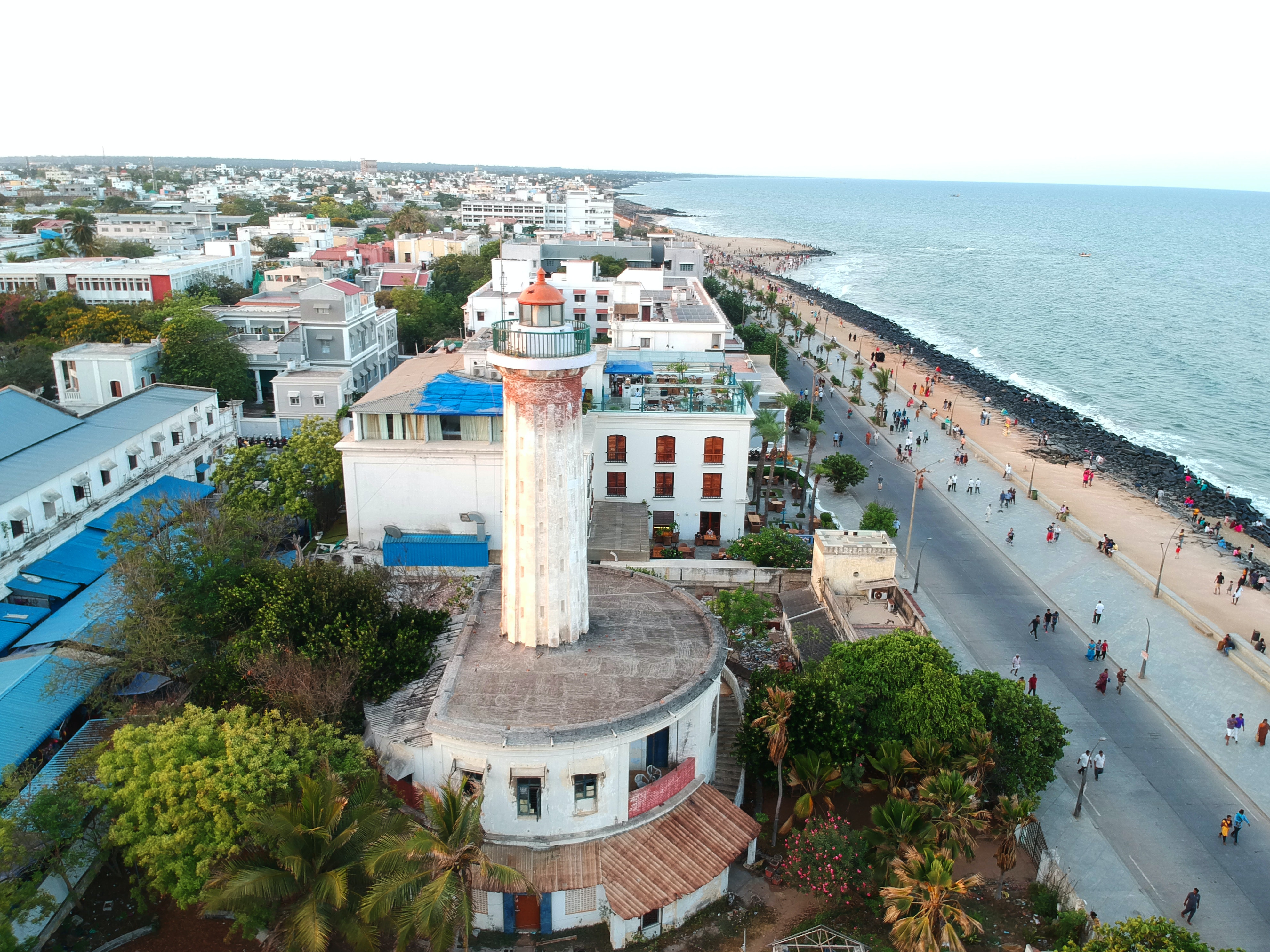
Fondly called Pondy, this is one place that will definitely make you stop and smell the roses. Having been under French rule for a long time, the entire place has a very French aesthetic, including cafes, houses, and boutiques.
Places to Visit in Pondicherry
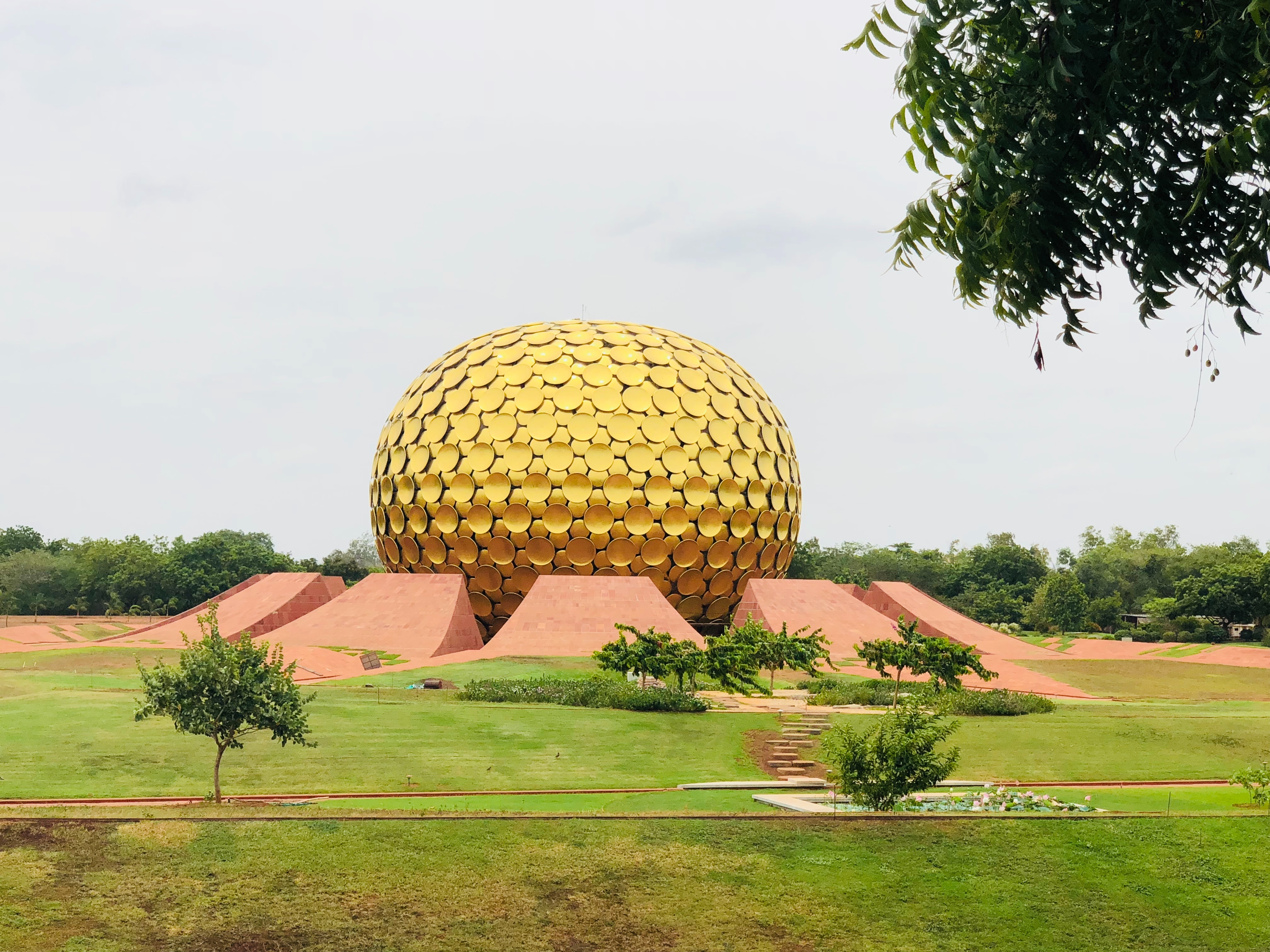
Pondy is home to Auroville, an experimental township. The community mainly focuses on sustainable living and cultural, environmental, social, and spiritual needs. Moreover, there are daily ashram tours and workshops for visitors. The main attraction is Matrimandir, the center of the township. For a more immersive experience, you can choose to stay somewhere inside for a few days and take part in various activities. Furthermore, they also conduct workshops for Yoga, Organic Farming, Arts, etc., and you can get all the information from their help desk.
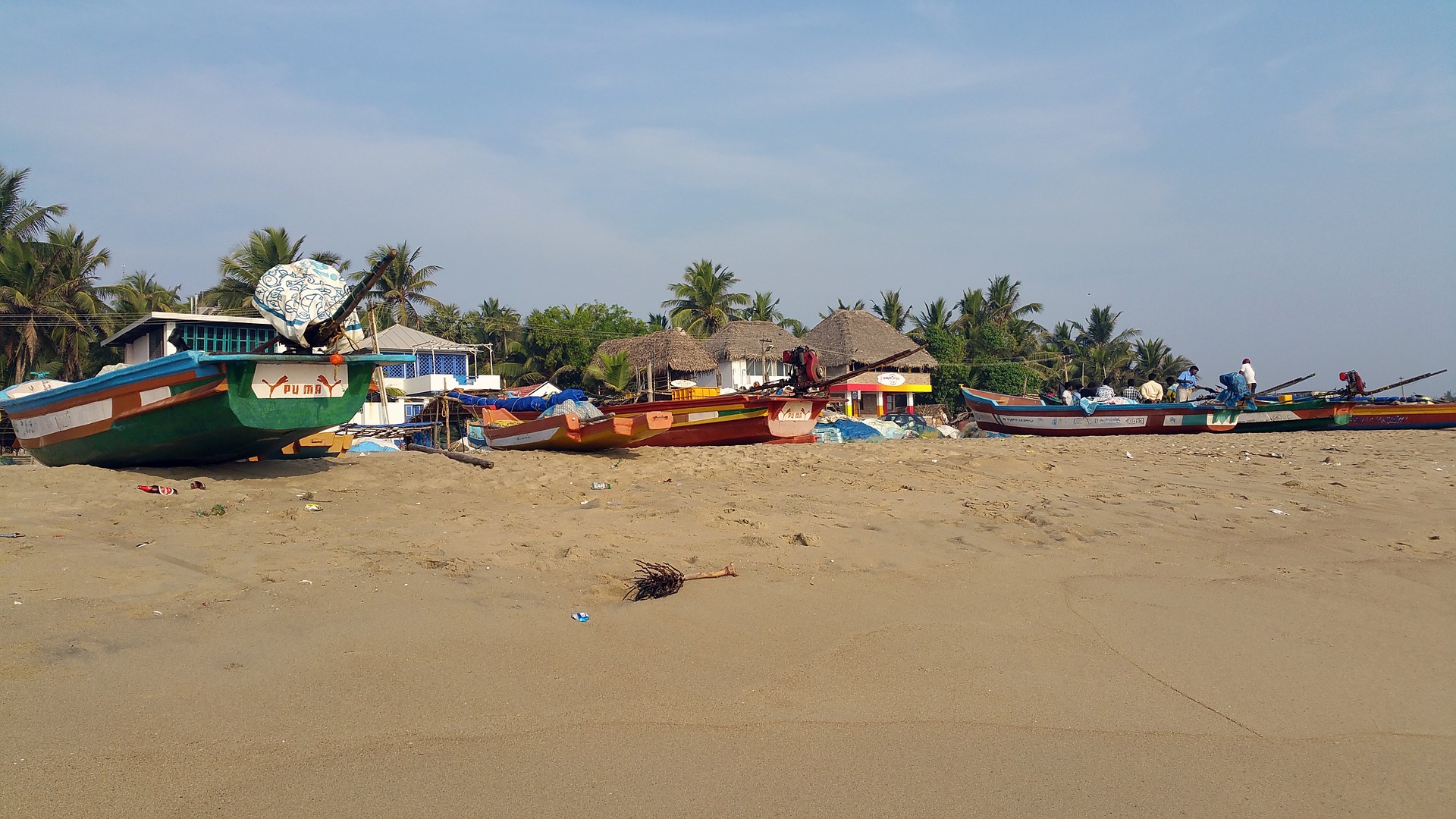
Pondicherry is not much of a beach destination, but it is a great place for an evening walk by the beach. A seaside promenade runs along the Bay of Bengal and is a must-visit for first-timers.
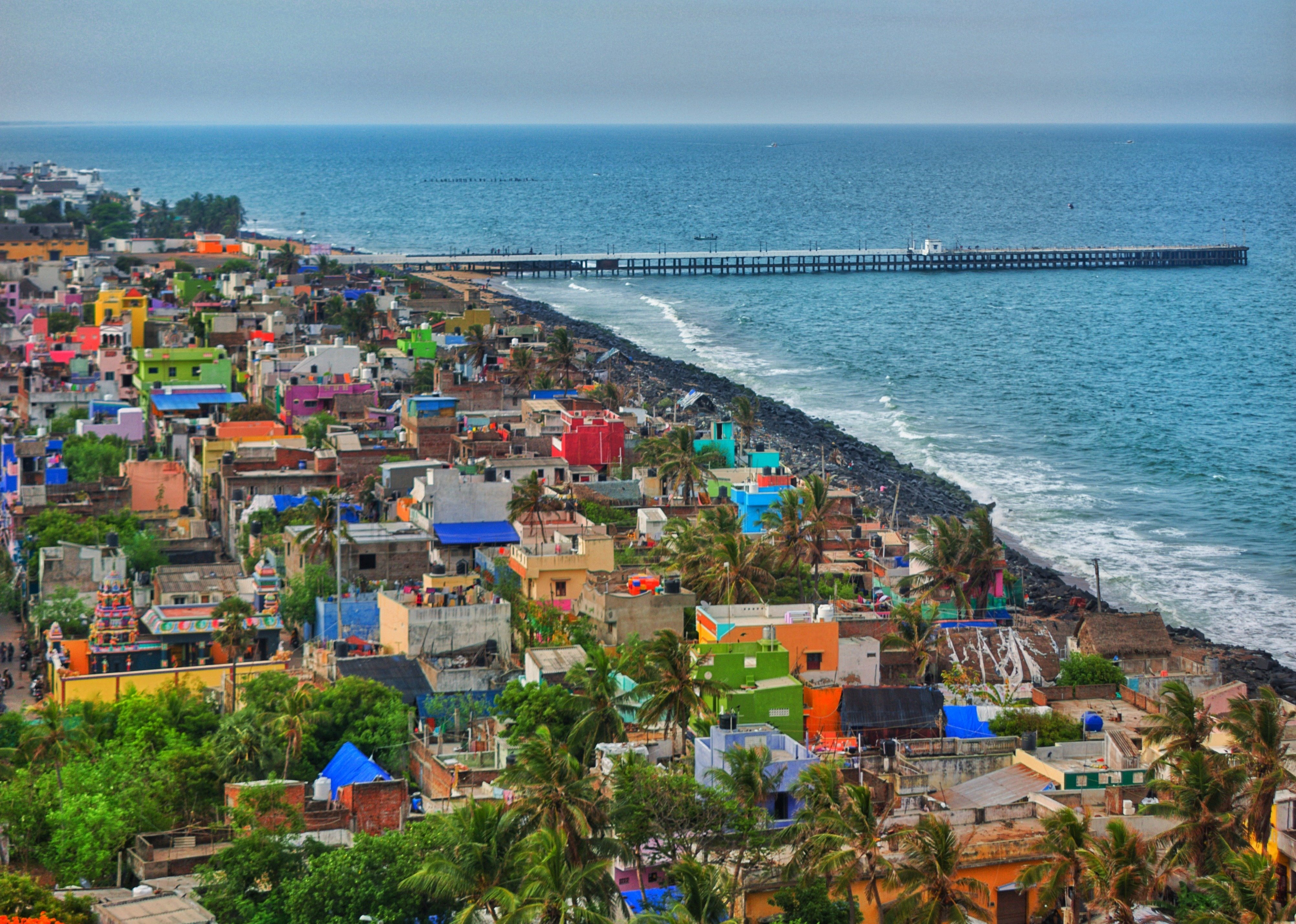
Take a day off to walk through the French and Tamil quarters and see colorful houses, pebbled streets, and super Instagram-friendly cafes. Both places are a stark contrast to each other, one famous for its colonial architecture and another for its vibrant and interactive style.
Then, visit the Pichavaram Mangrove Forest, the world’s second-largest mangrove forest close to Pondicherry. Spread across a massive 1,100 hectares, and it is a haven for migratory birds such as snipes, egrets, storks, and herons. The local boatmen will take you through the mangroves and maybe even some hidden tunnels.
Things to Do in Pondicherry
Attend workshops for organic farming, art, and yoga in Auroville, spoil yourself with desserts at cafes (Our recommendation: Bread and Chocolate & Auroville Bakery), and surf at Bodhi beach.
Accommodation
There are a lot of boutique stays in Pondicherry town, and for those of you looking for a more peaceful atmosphere, Auroville has some homestays too.
Day 17-21: Kerala
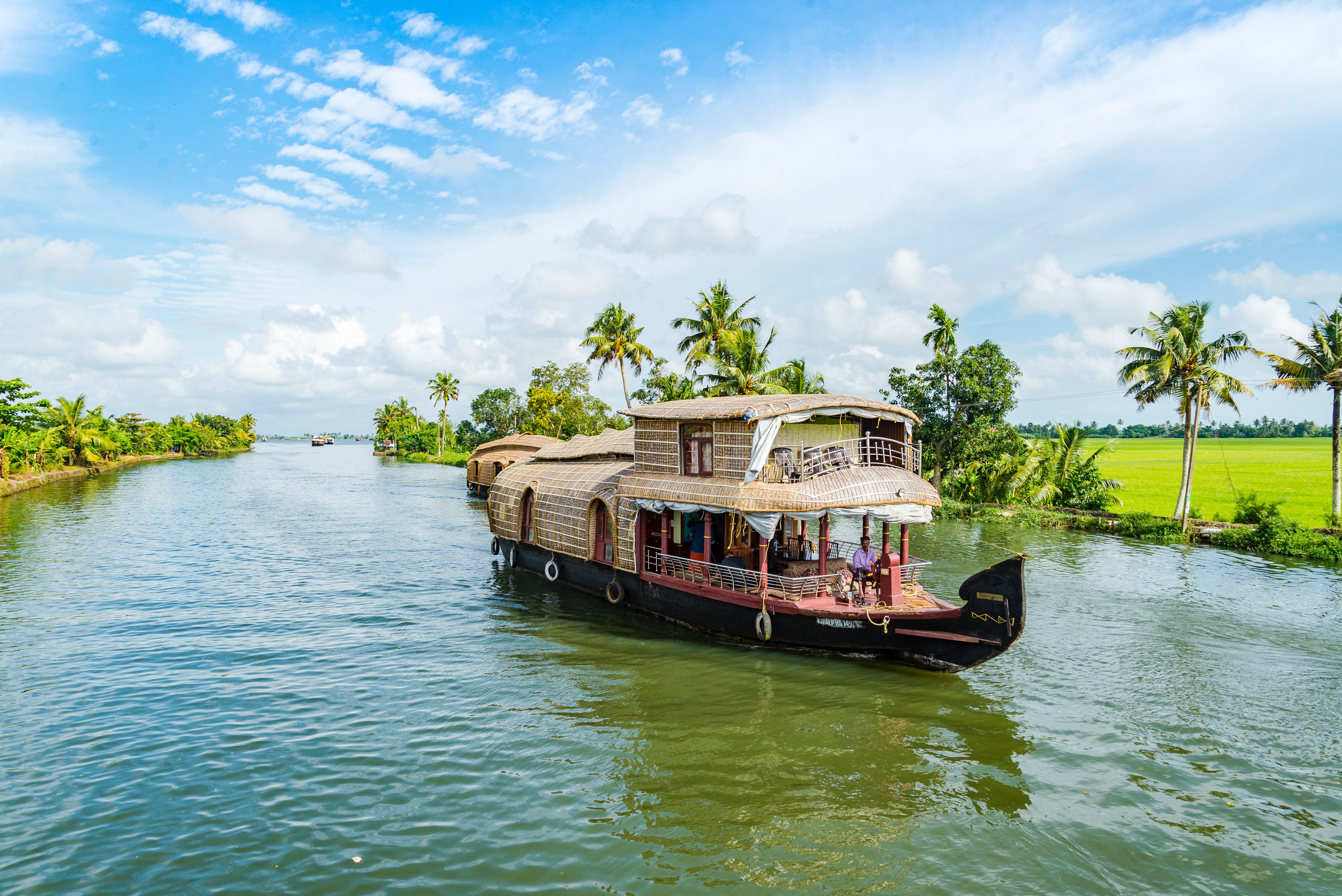
Extend your trip by visiting Kerala, known for its lush mountains, sunny beaches, and stunning nature. In this place, you can enjoy an idyllic holiday in hill stations like Munnar and Vagamon, watch beautiful sunsets at Varkala or Kovalam, and trek through the forests and mountains of Wayanad. Moreover, you can even go on a charming houseboat ride in Alleppey.
Things to Do in Kerala
Trek in Wayanad, ayurvedic Massages in Fort Kochi, beach hopping in Thiruvananthapuram, and a road trip to Munnar.
Overall, did you find our South India Travel Guide useful? And are you now interested in starting your trip to South India? Check out JoinMyTrip to kick-start your incredible adventure! Here you will find like-minded TripLeaders and many cool yet unique trips. So, what are you waiting for? Book a trip with us now!

